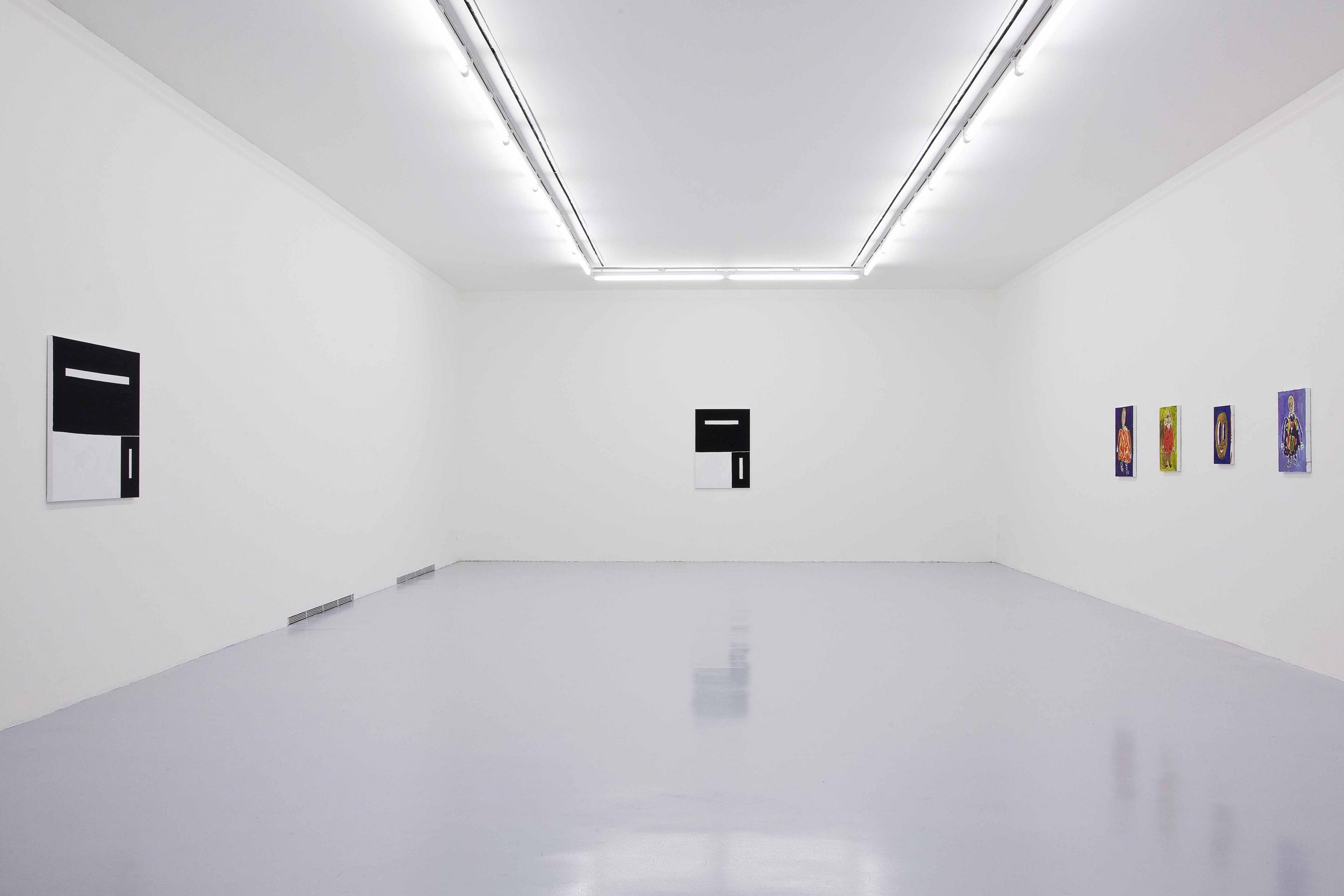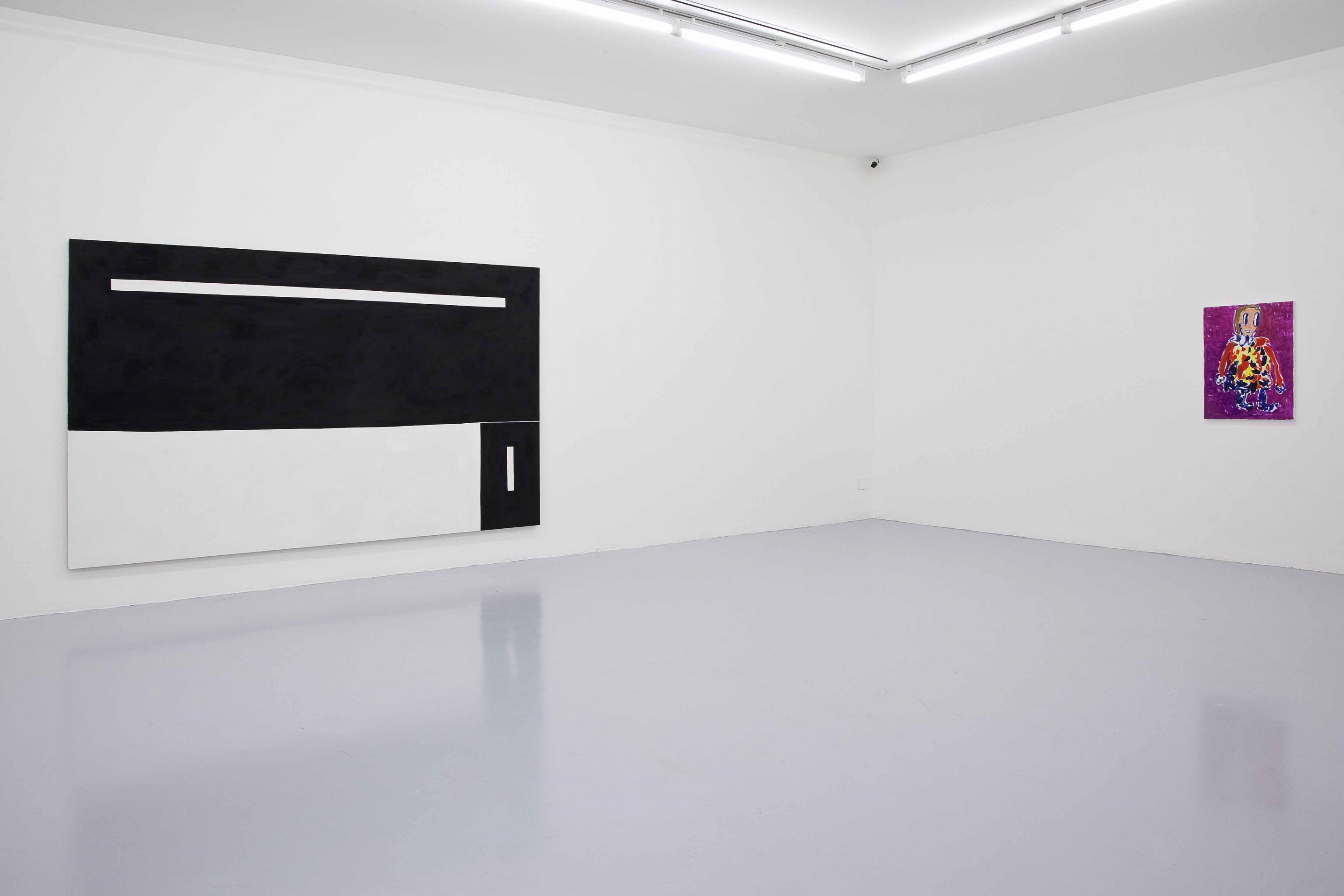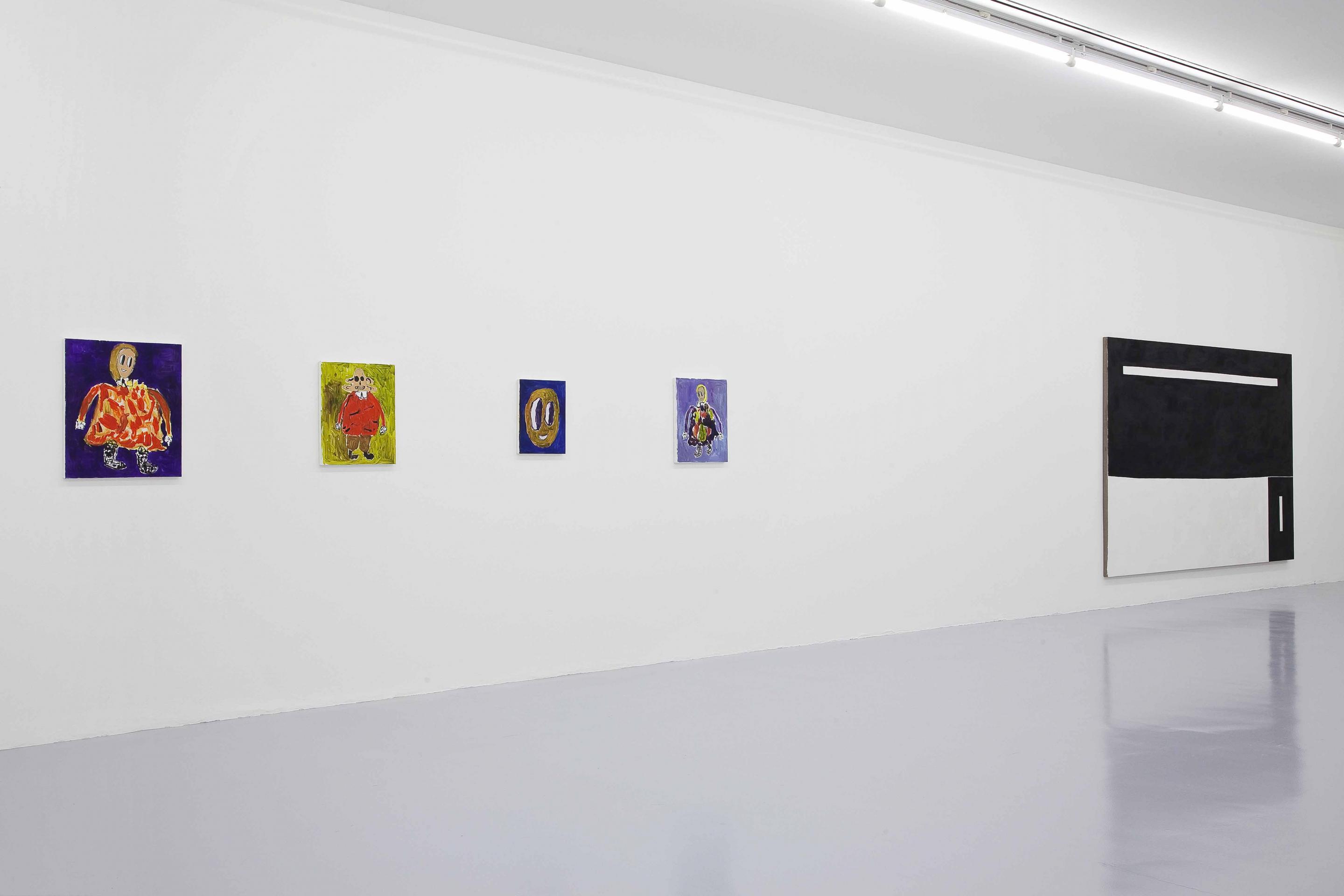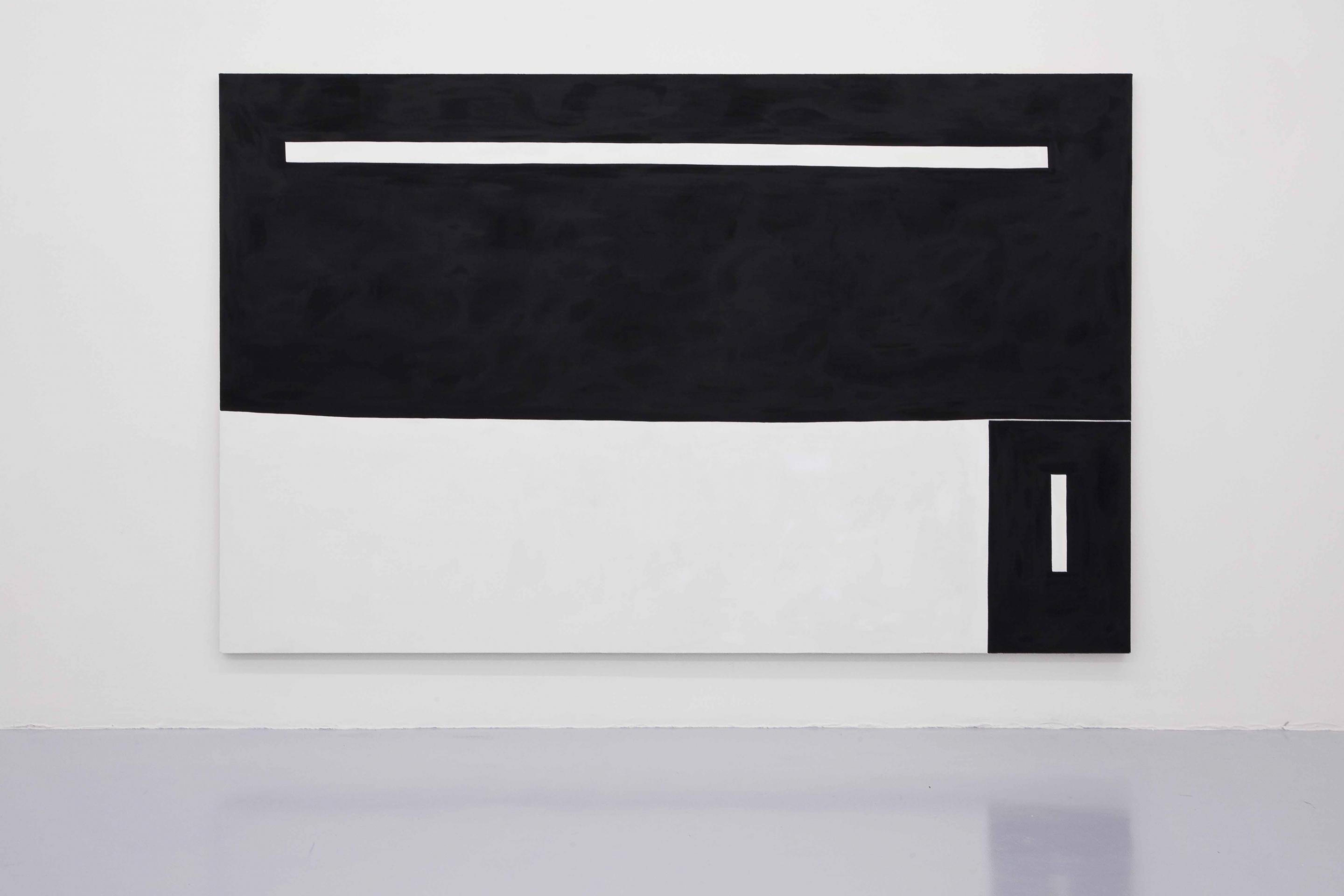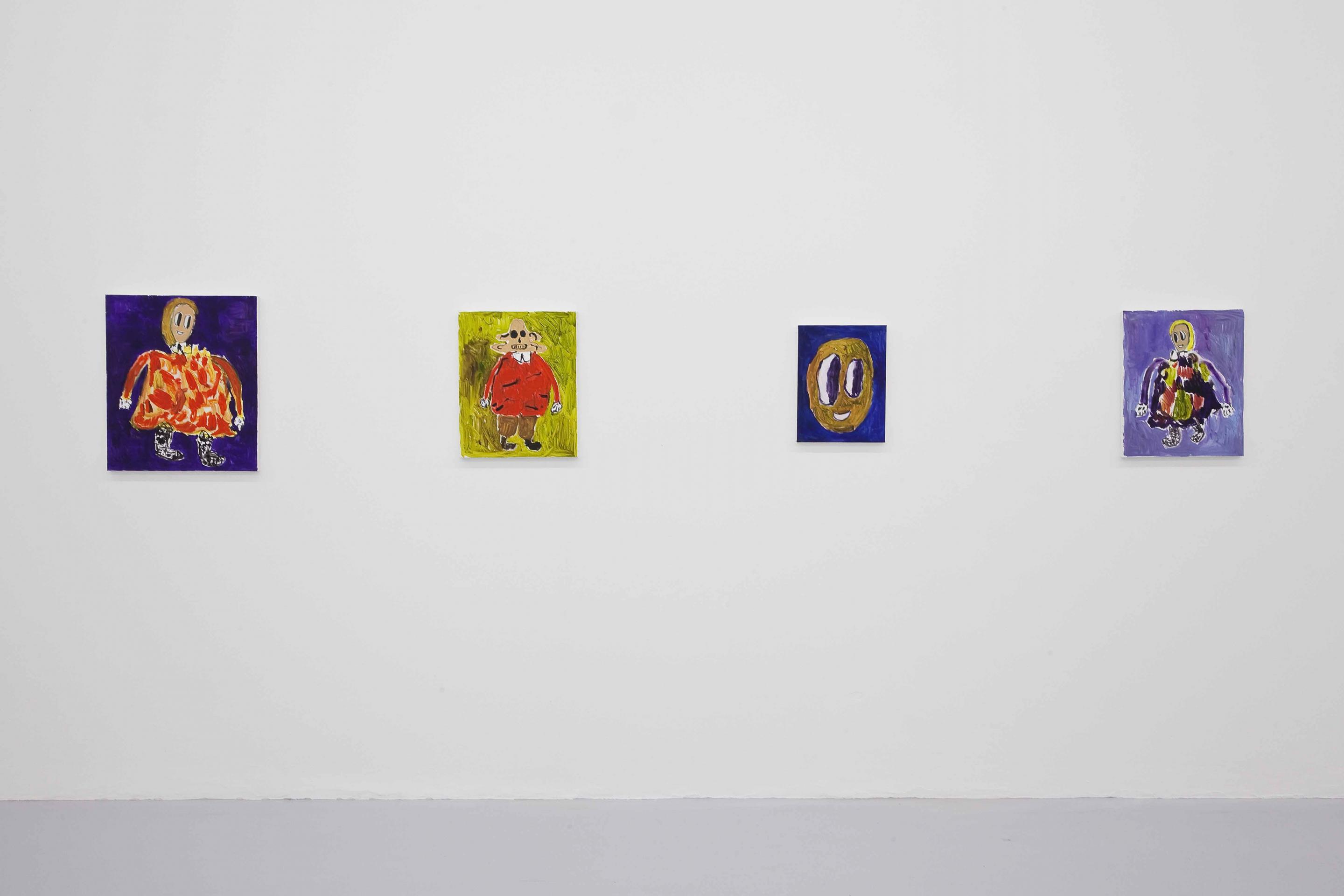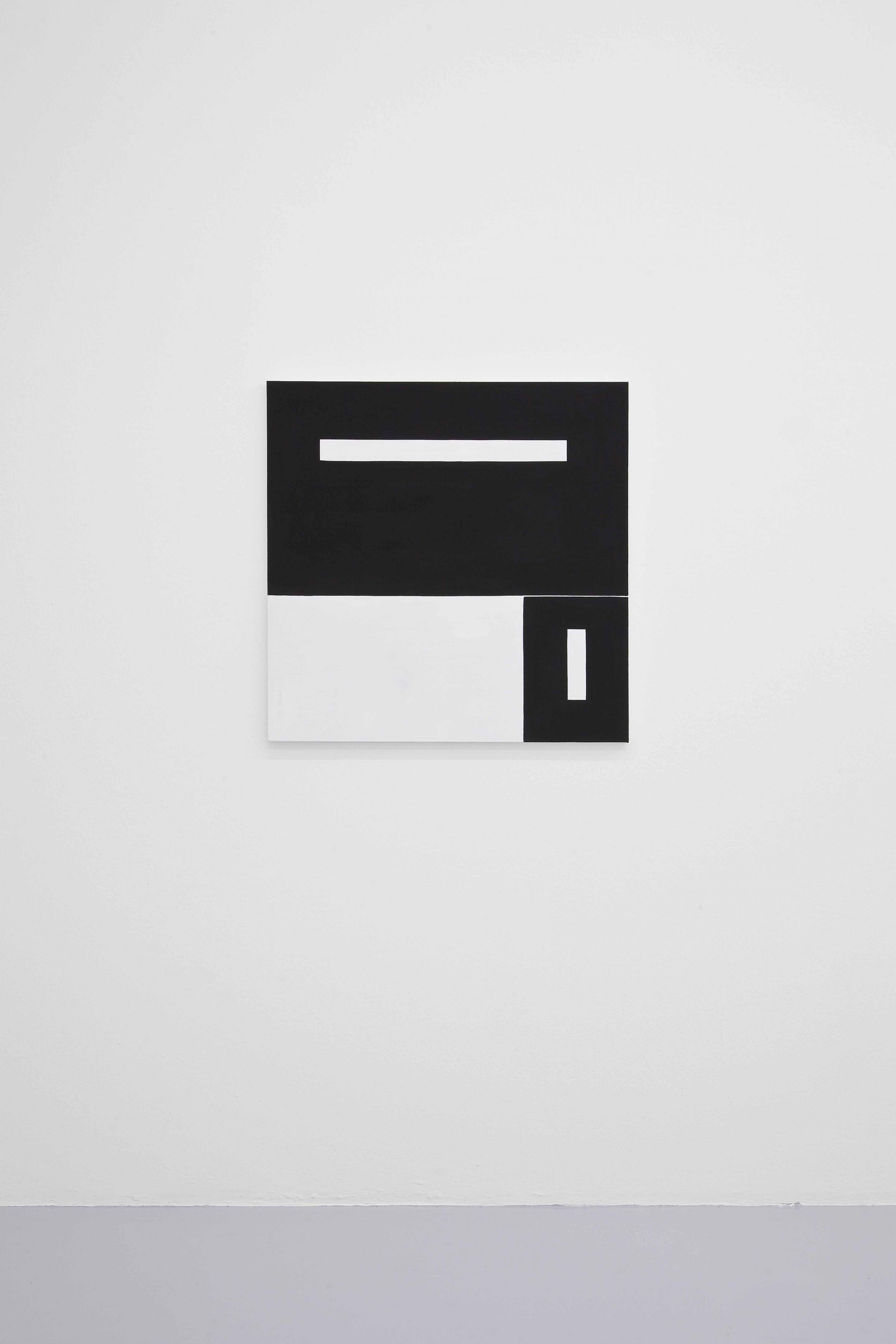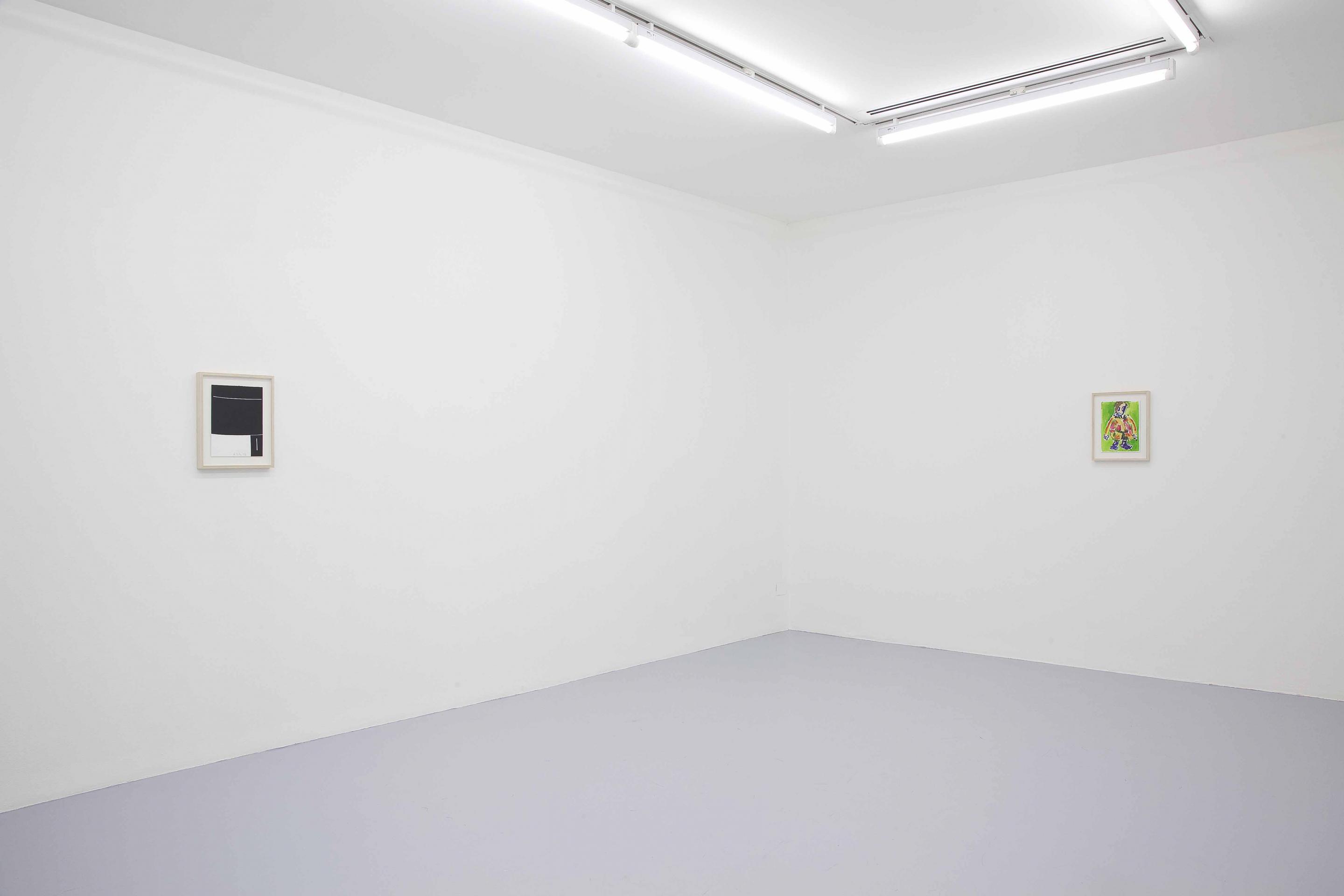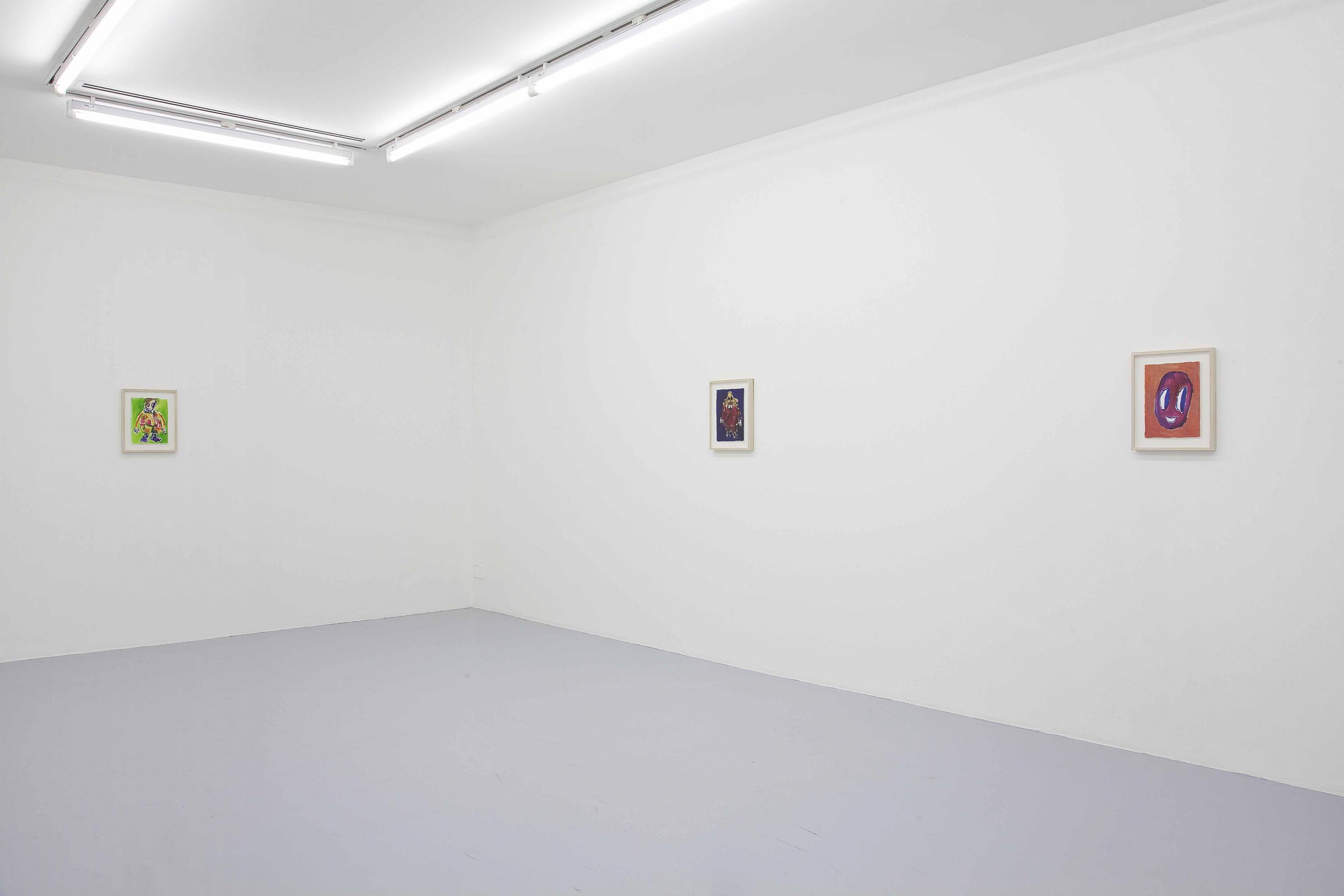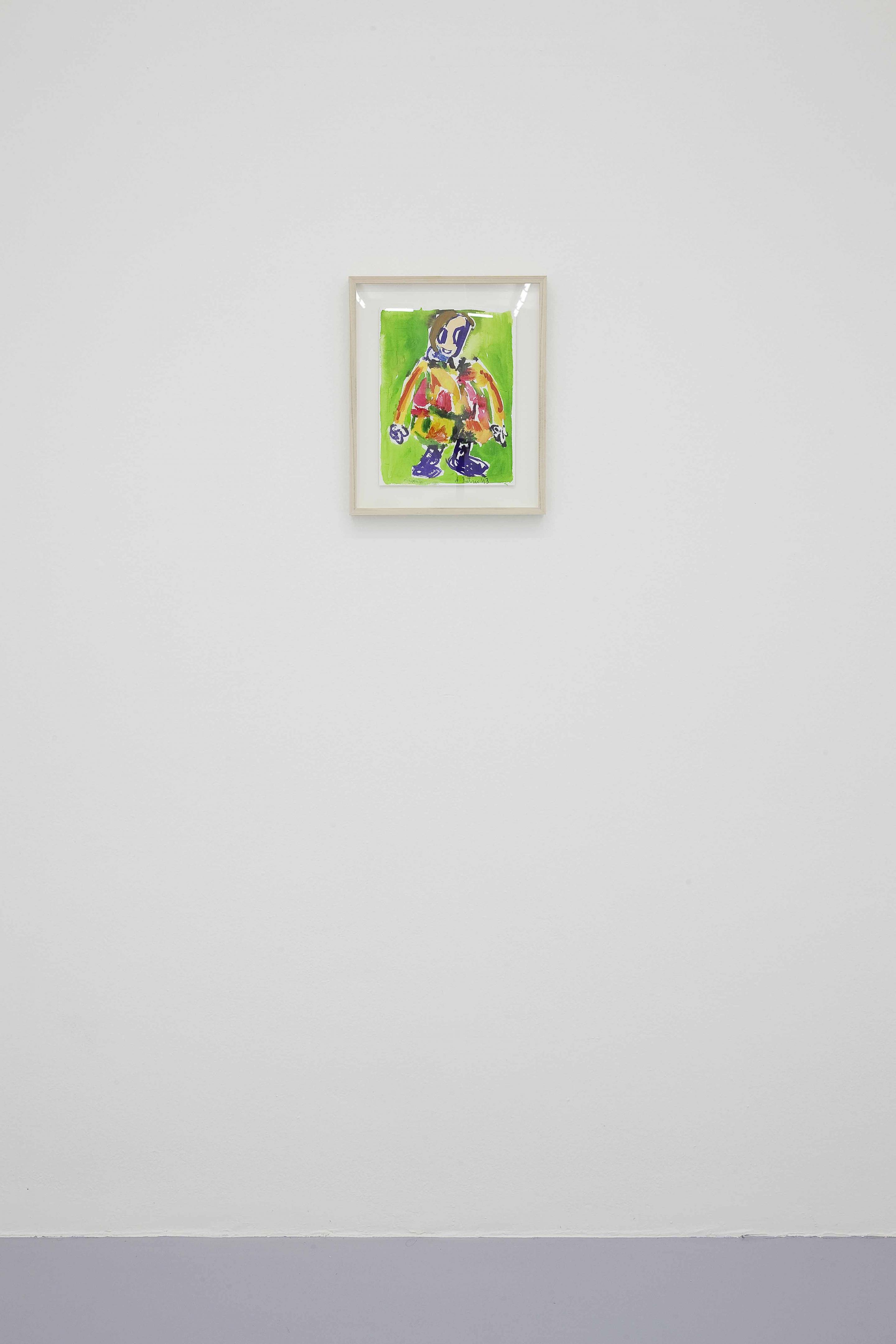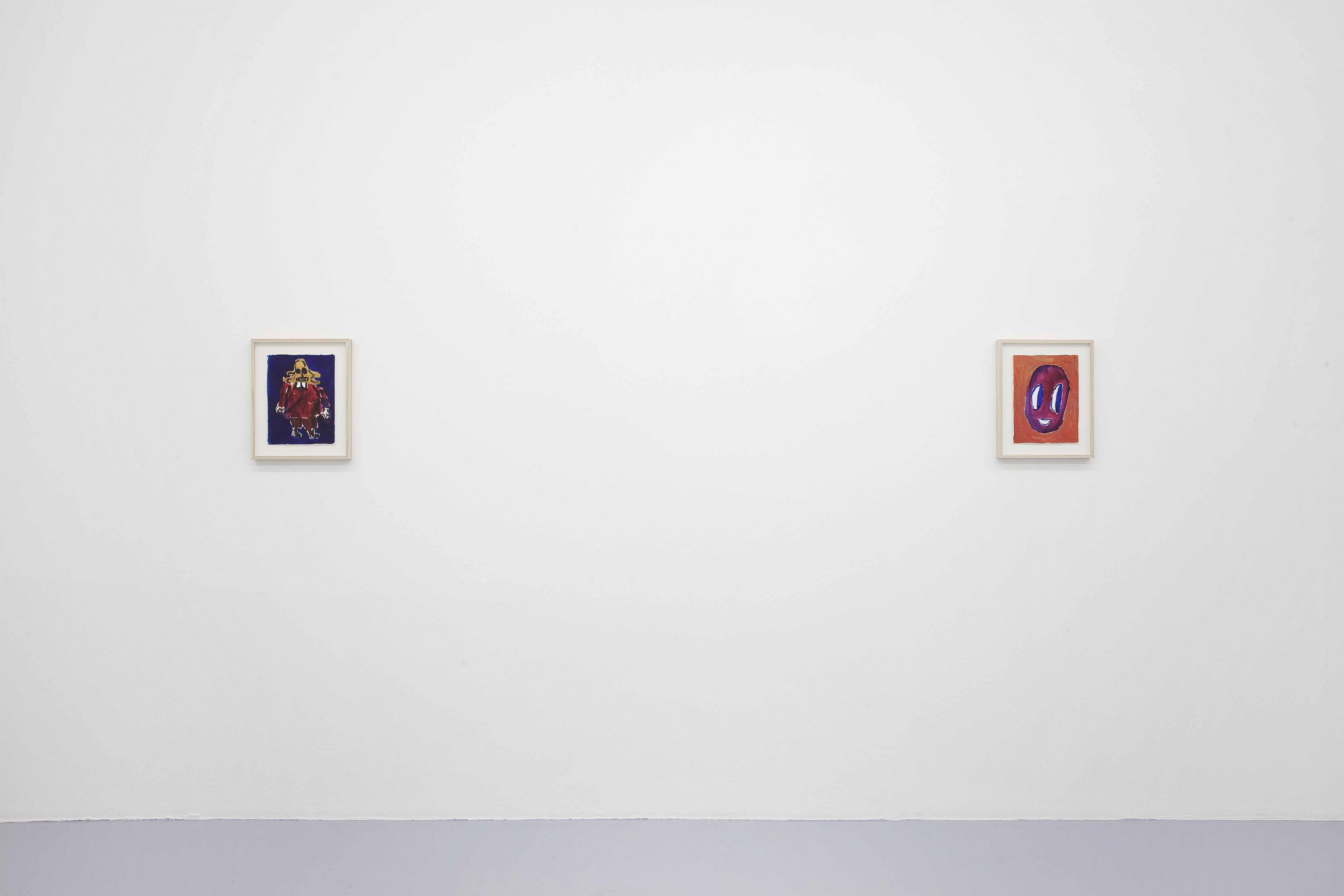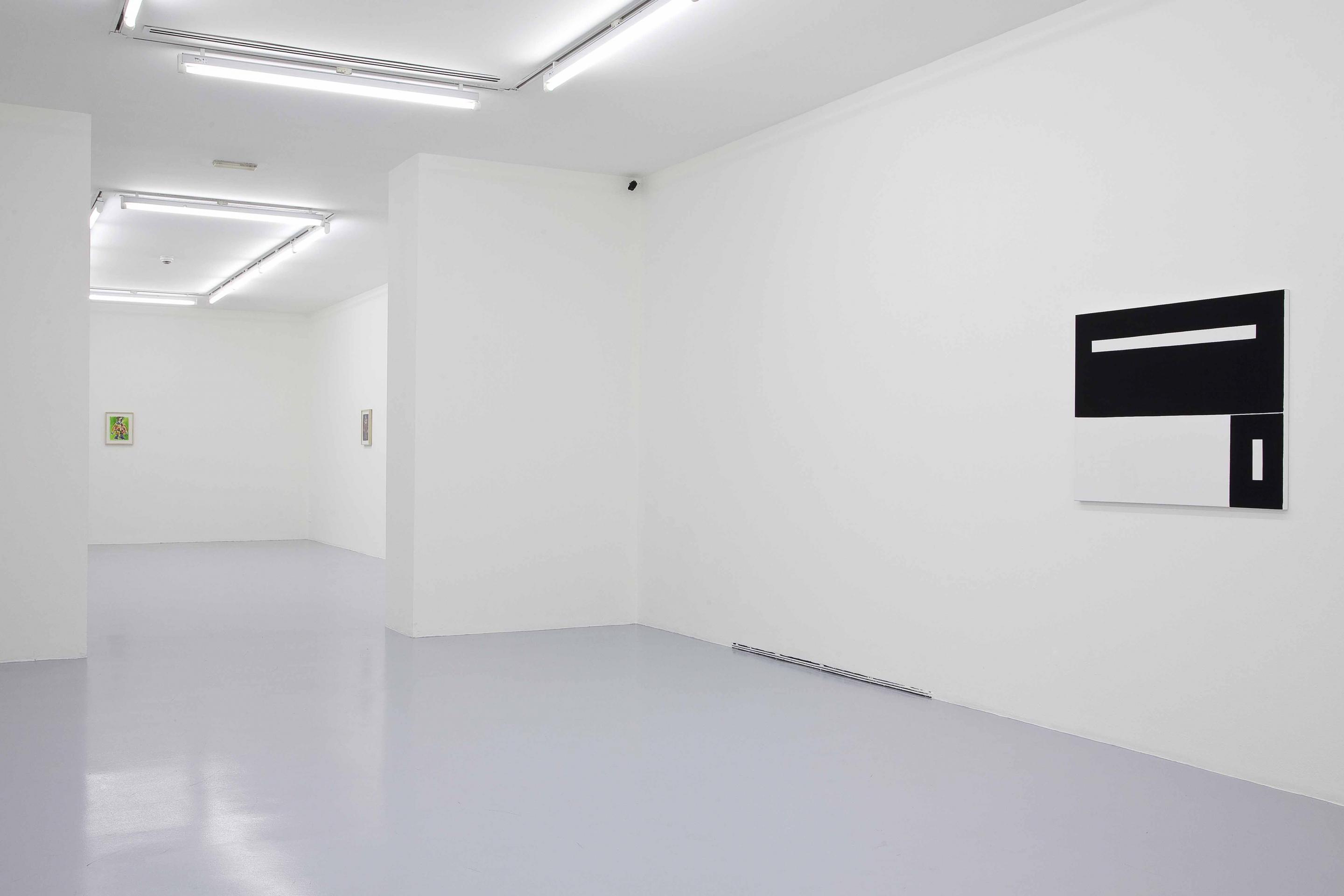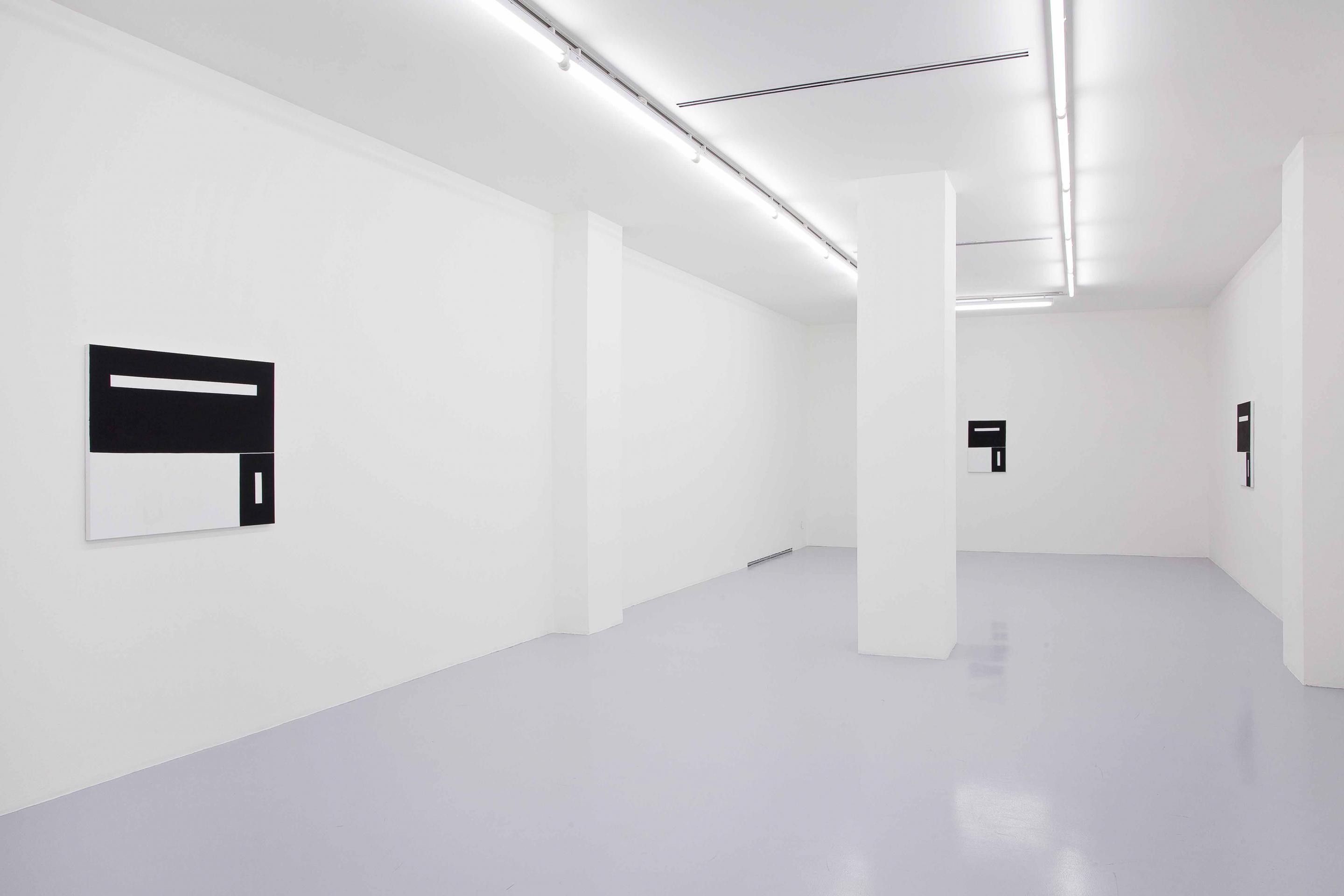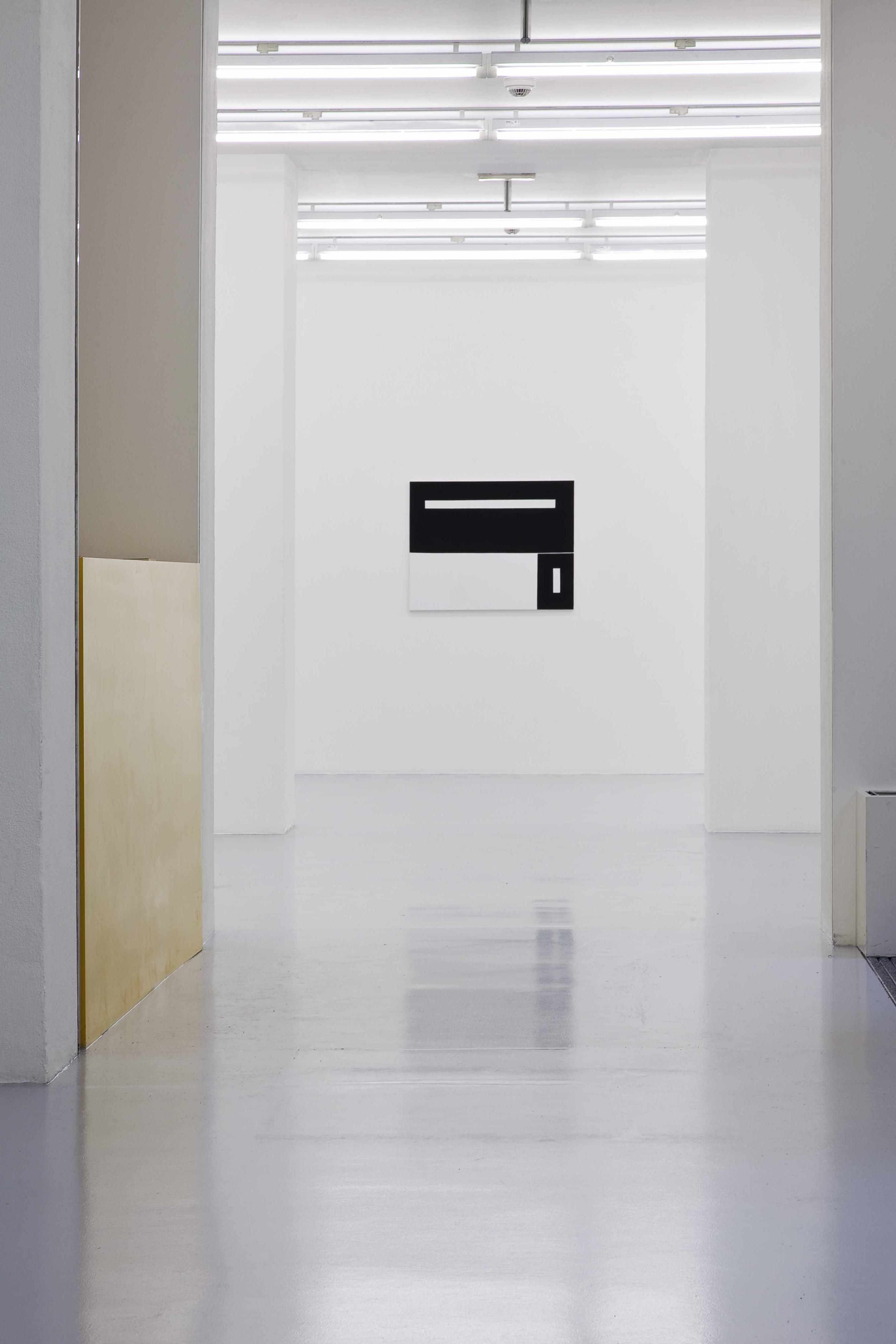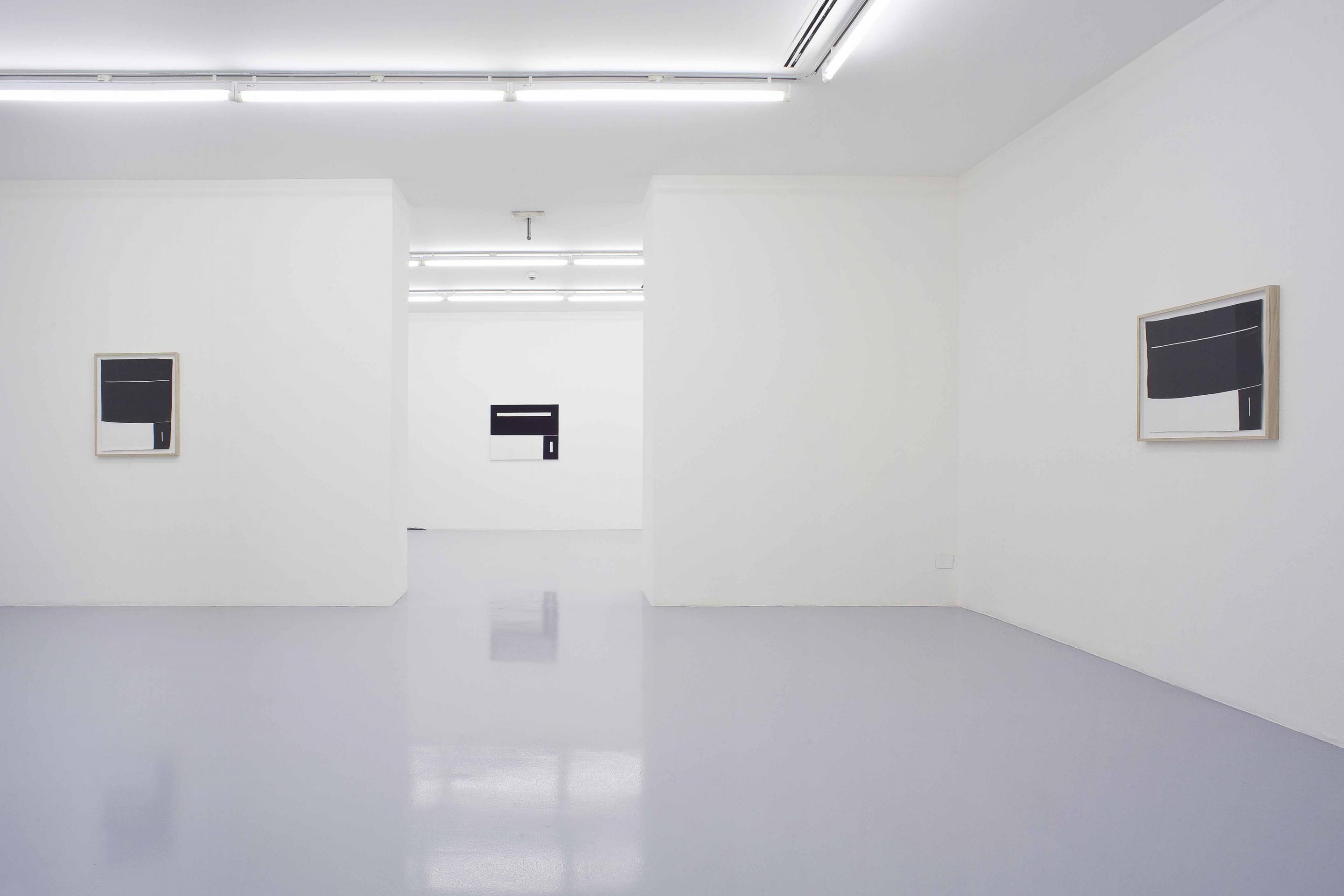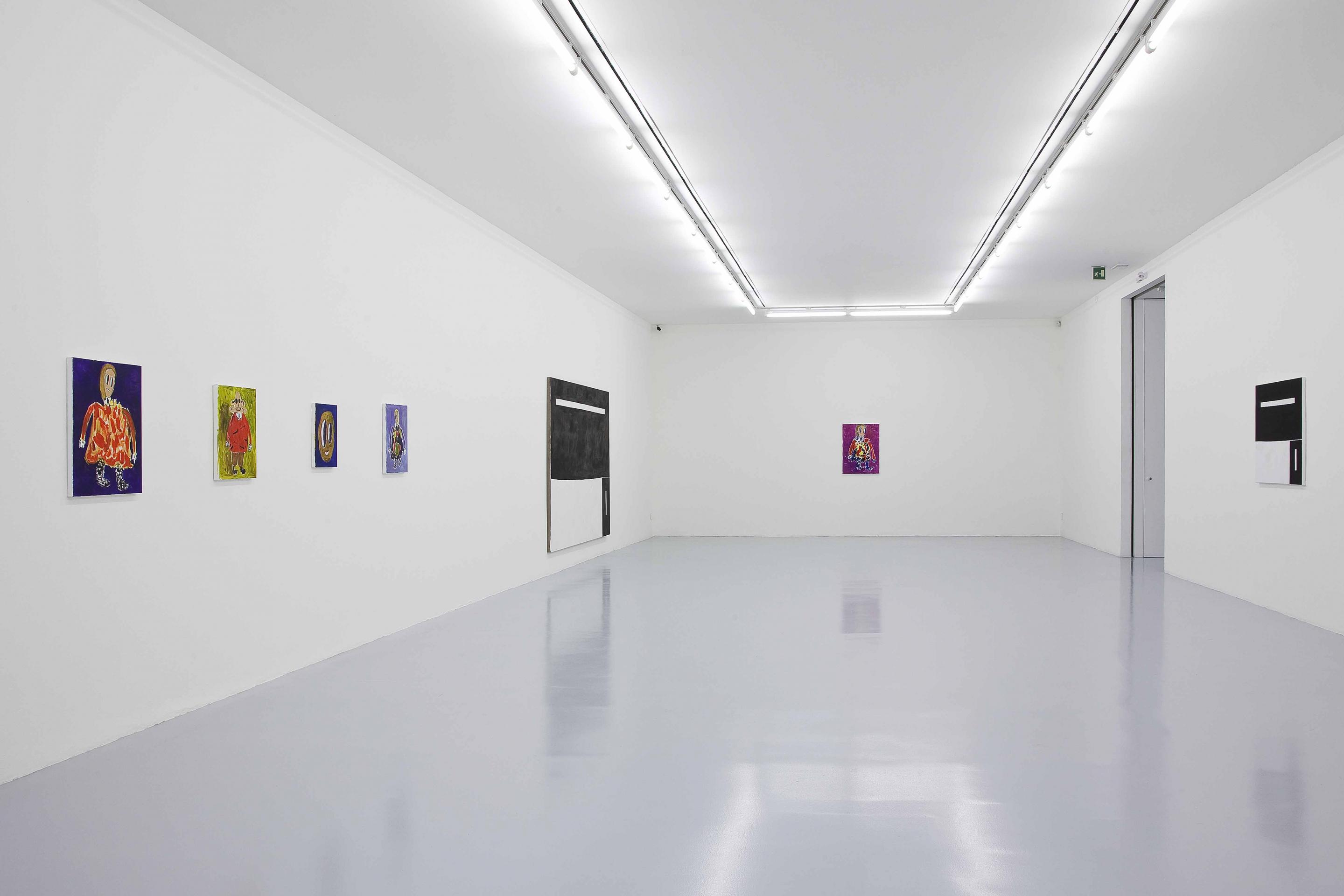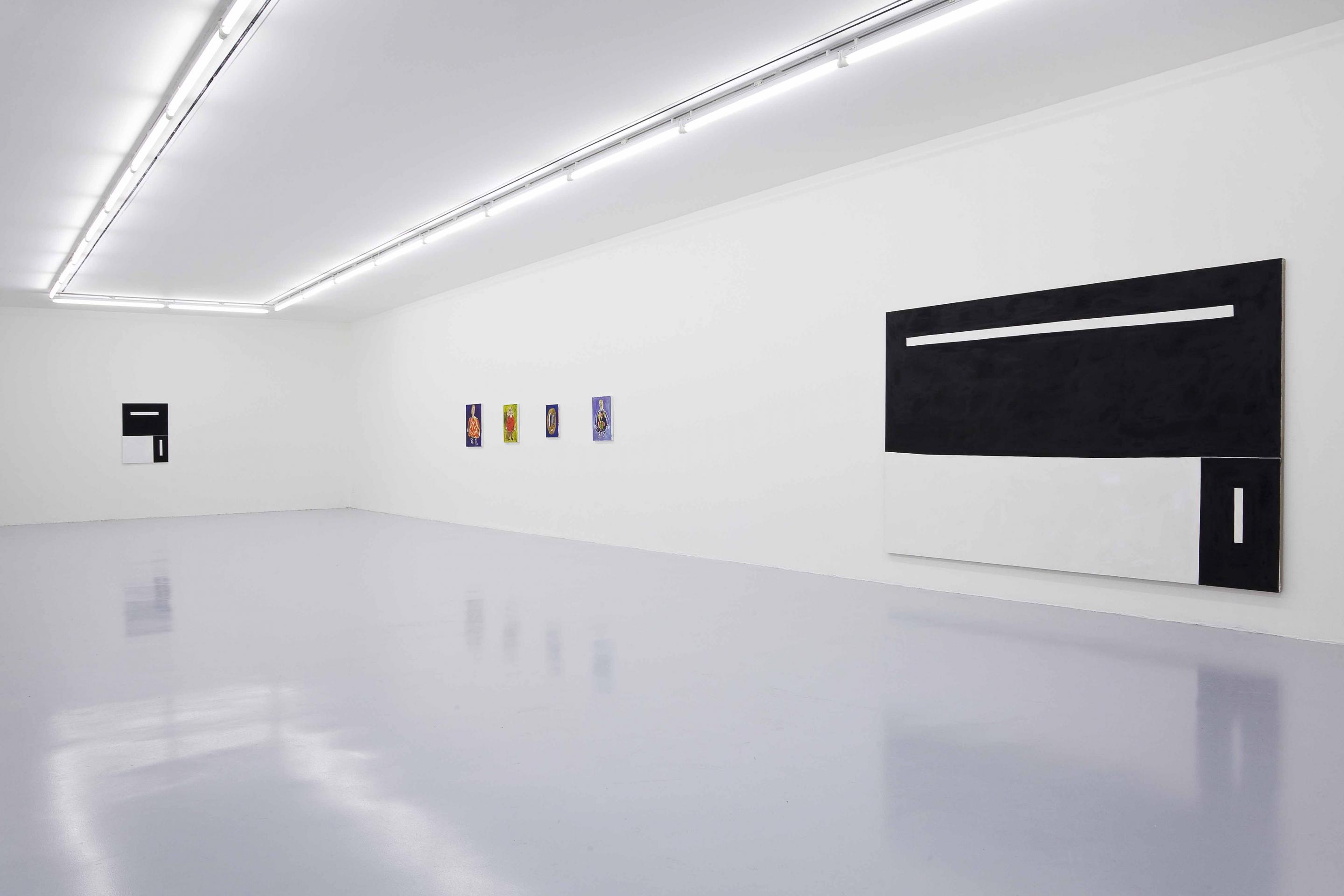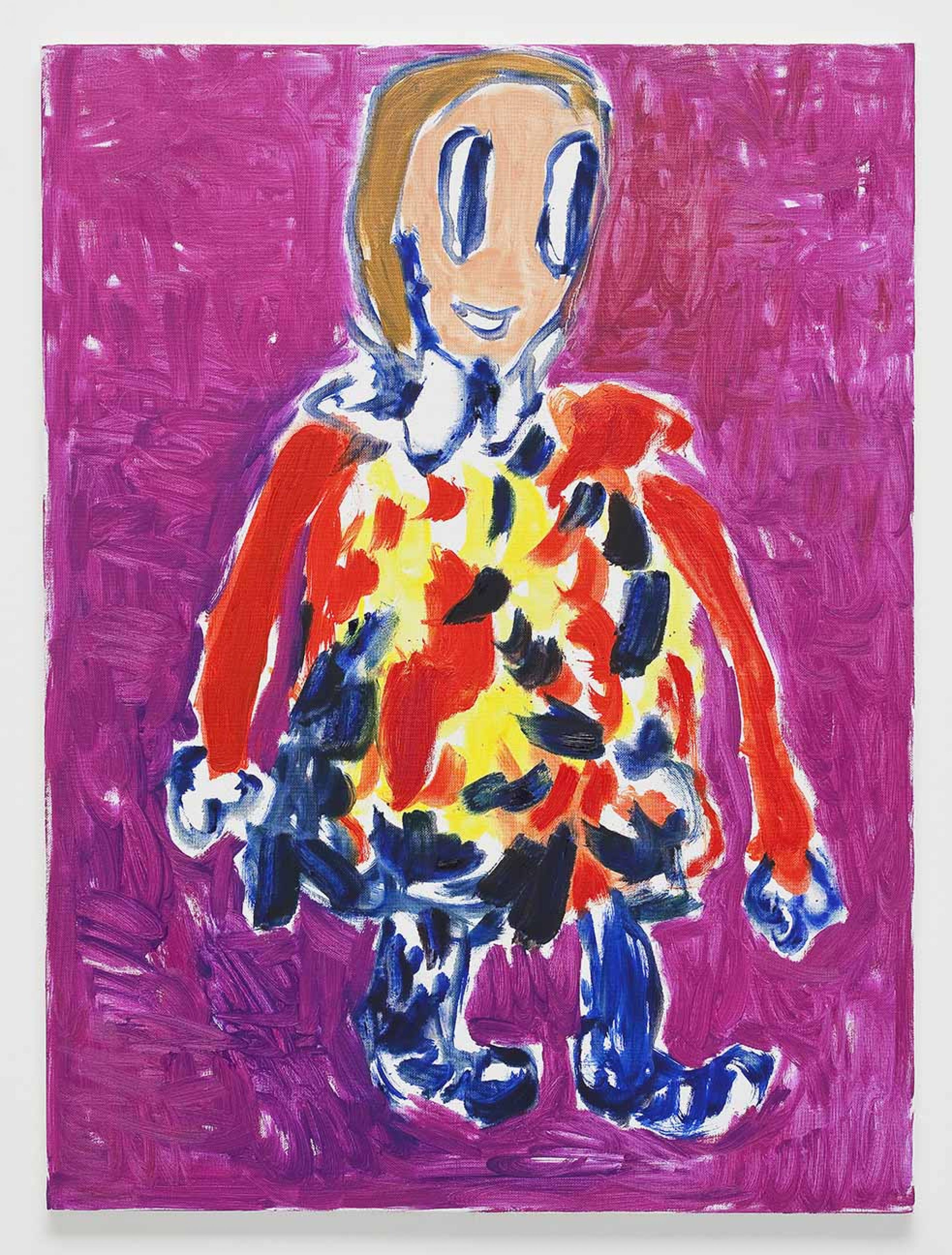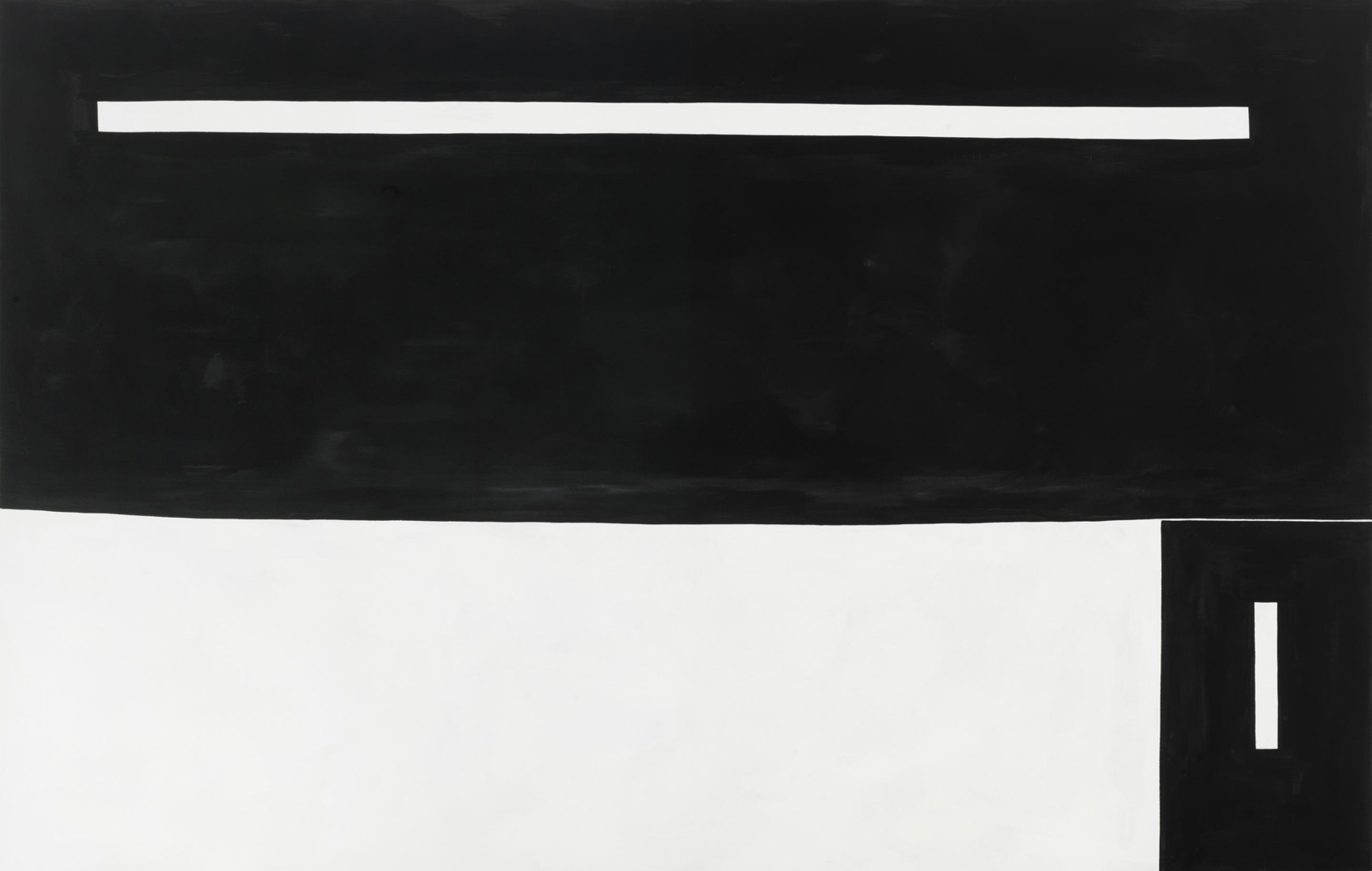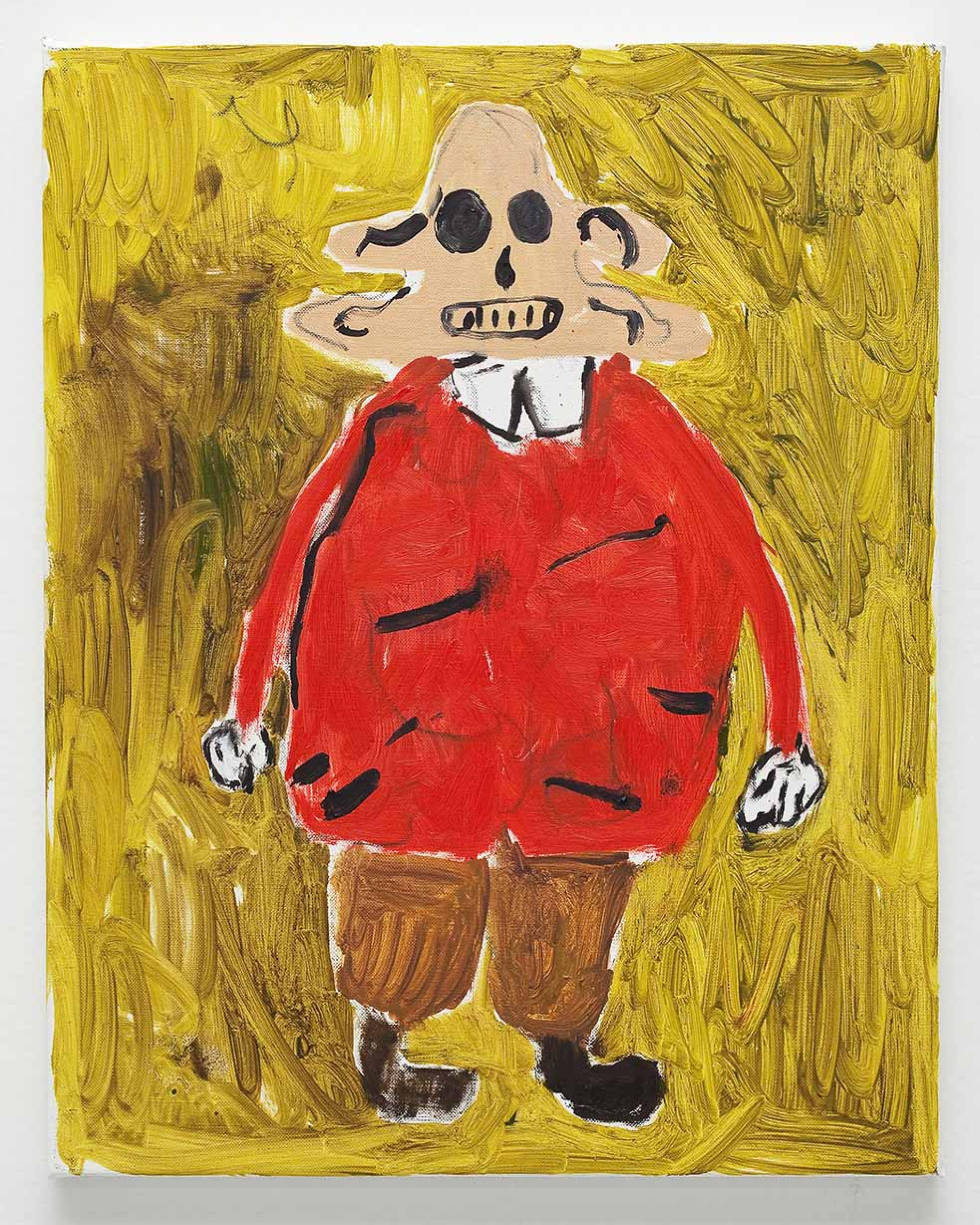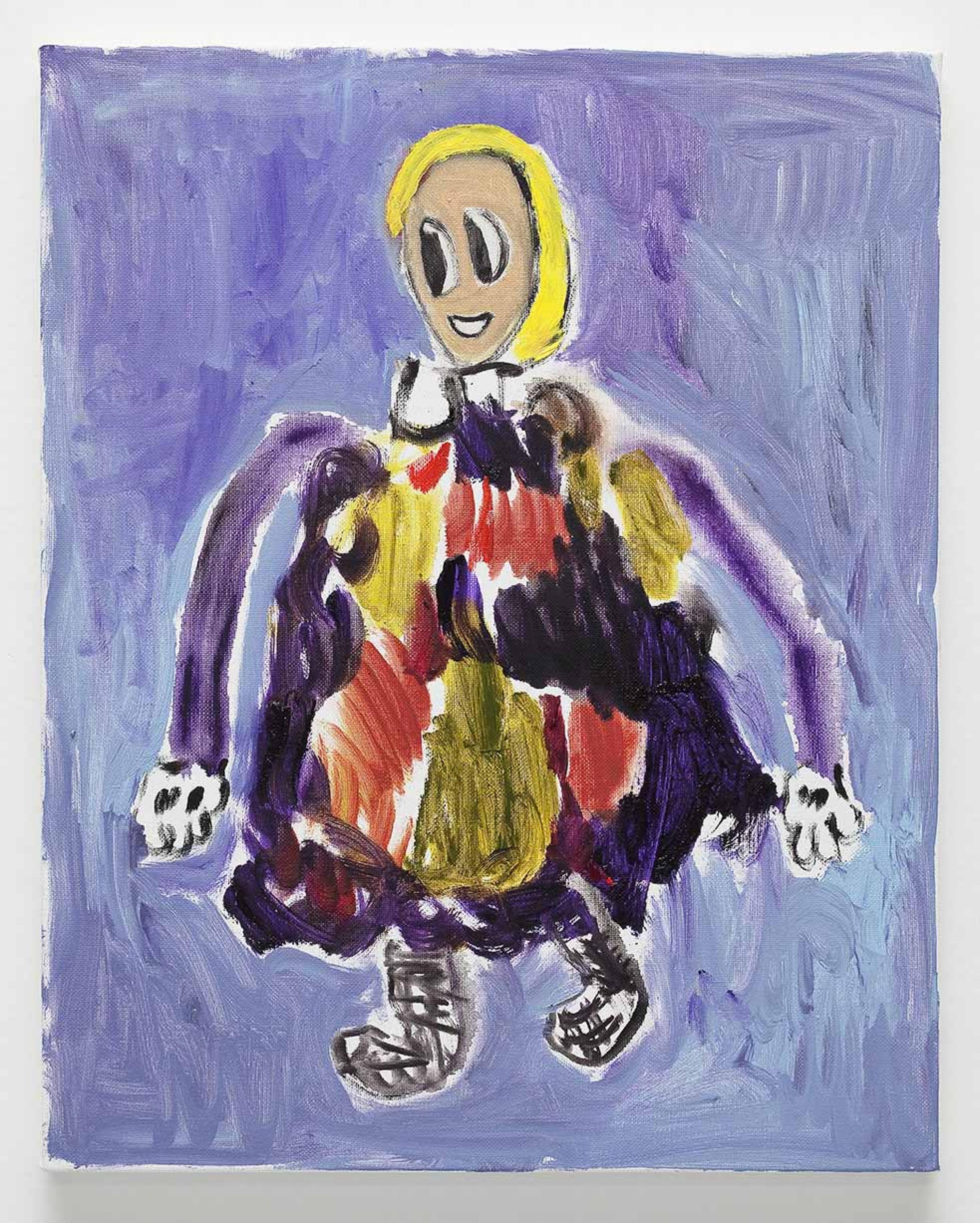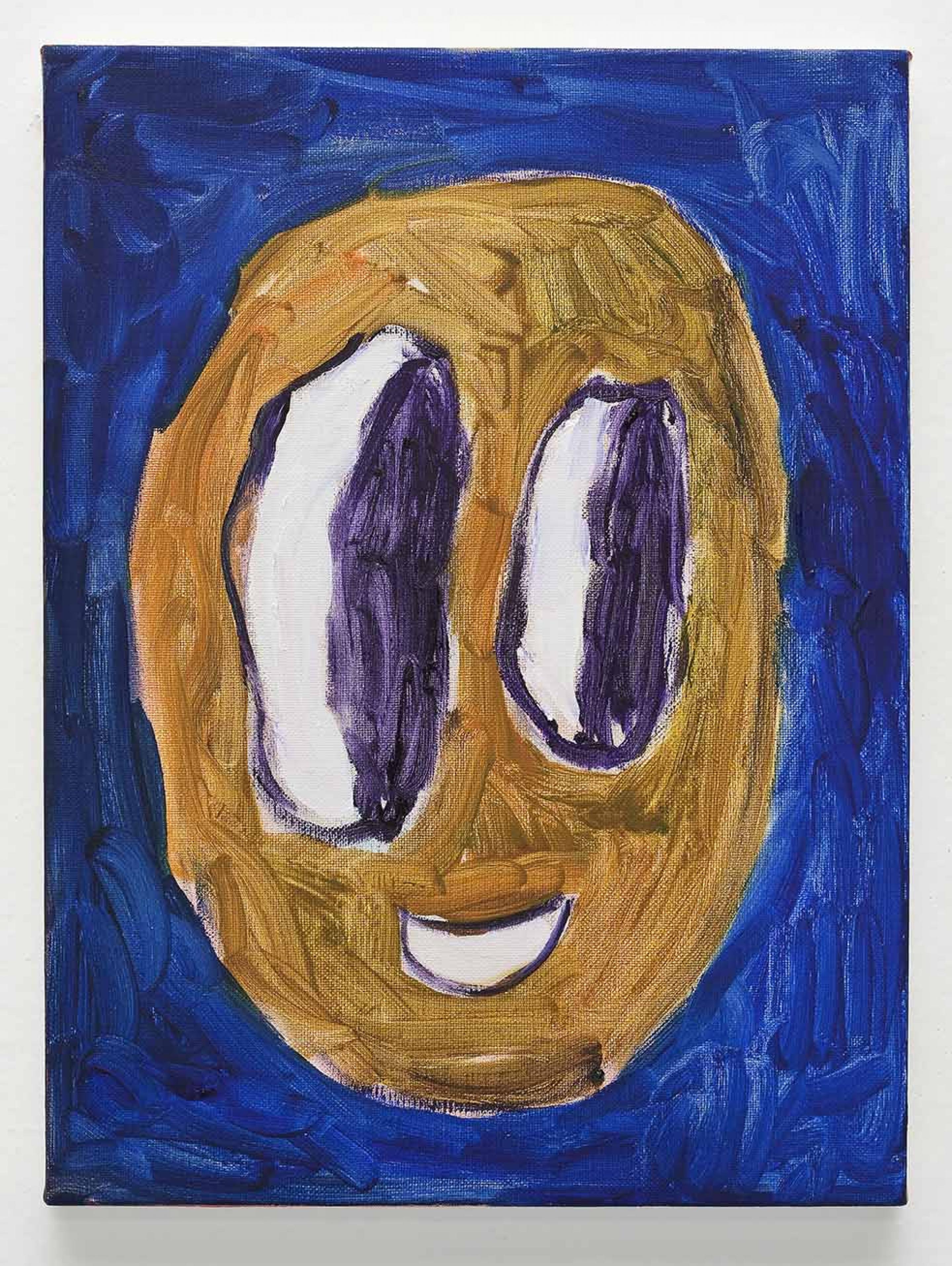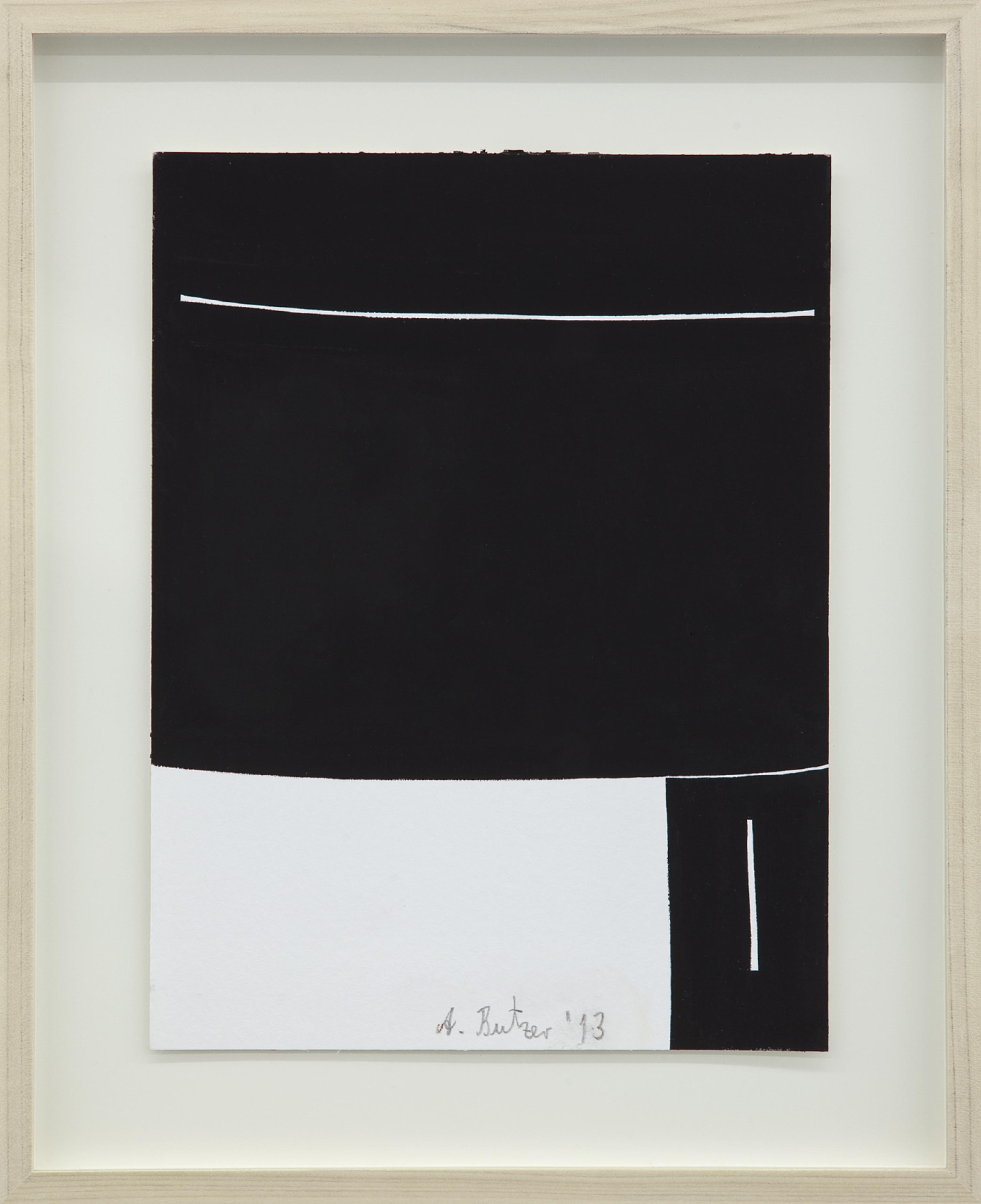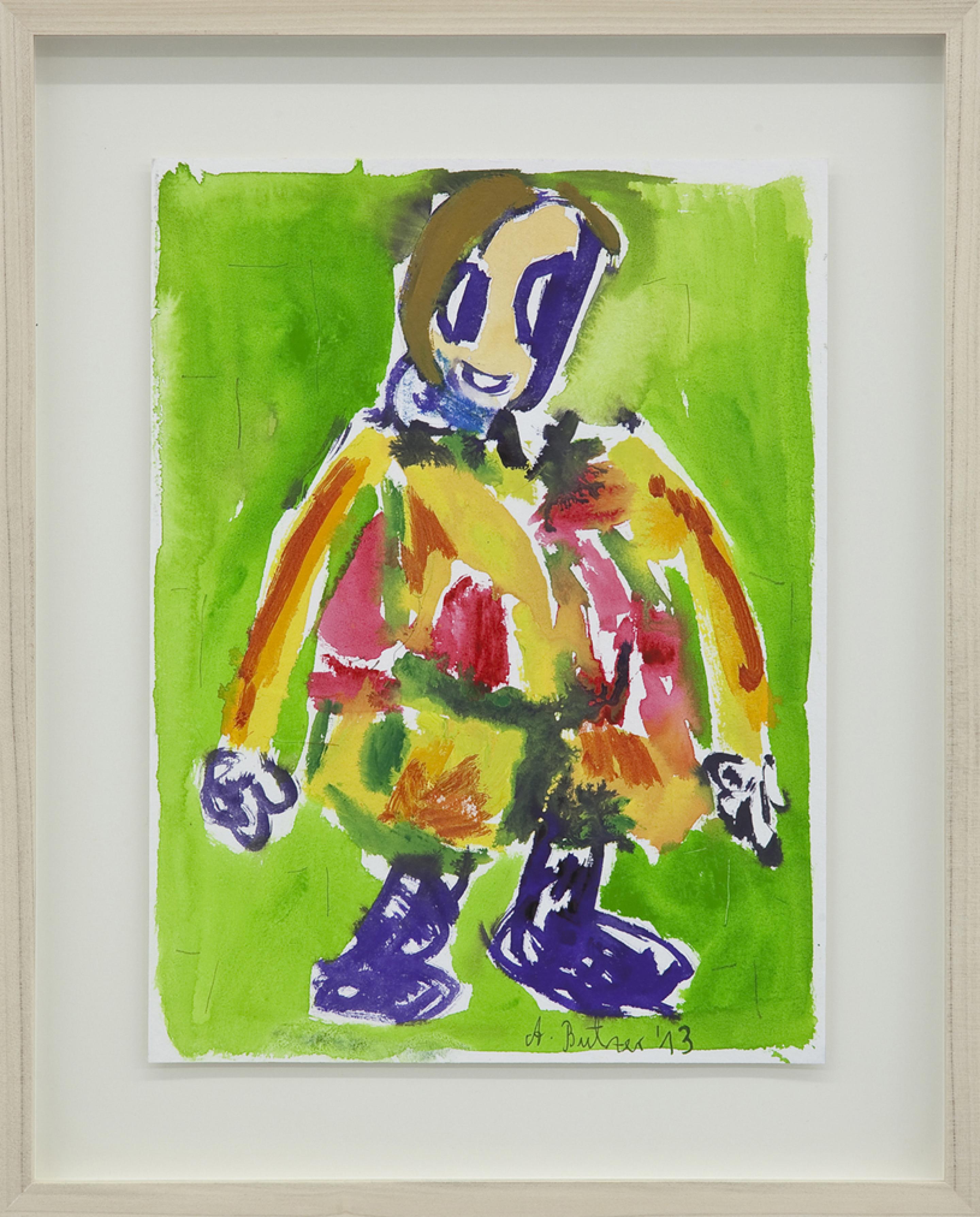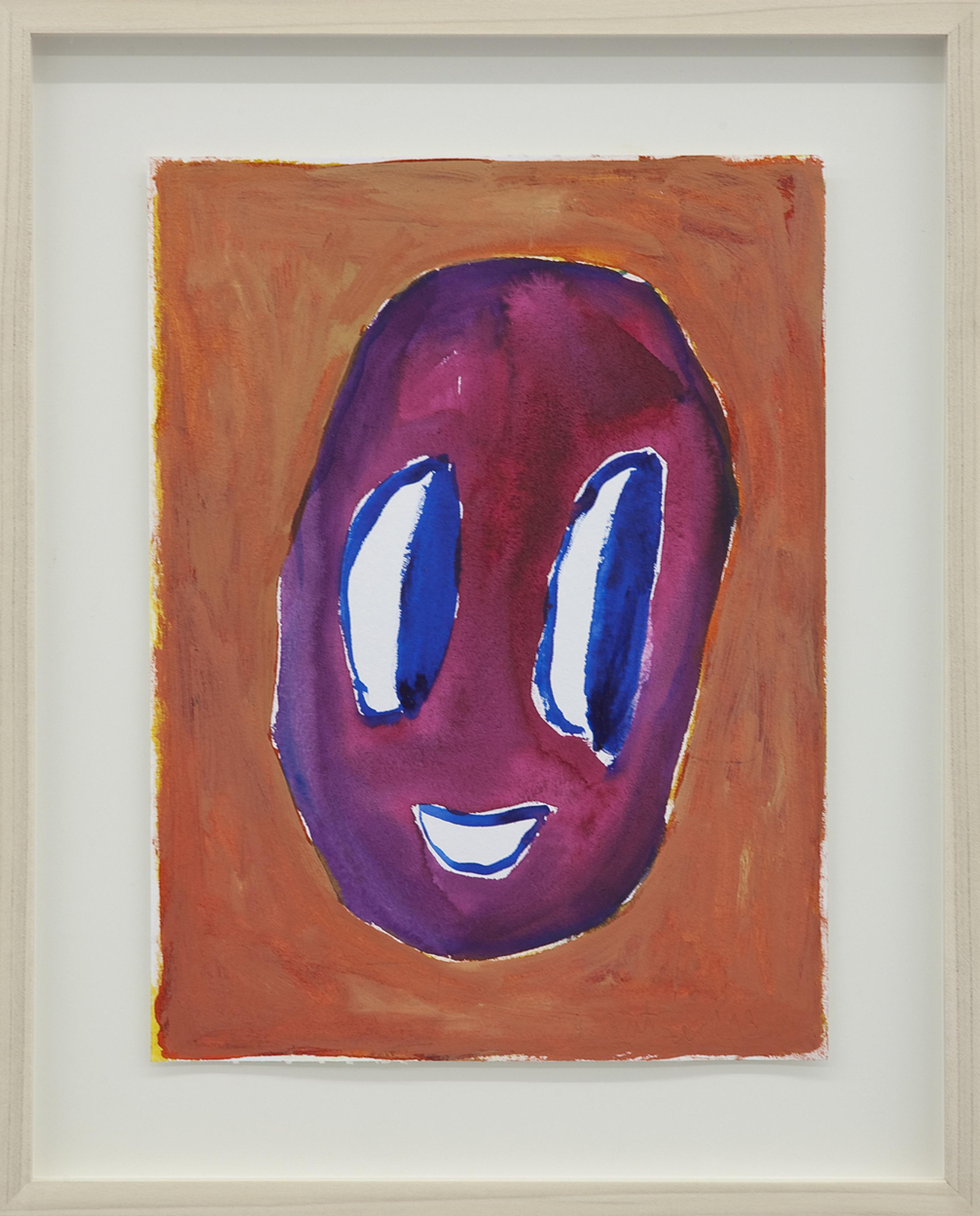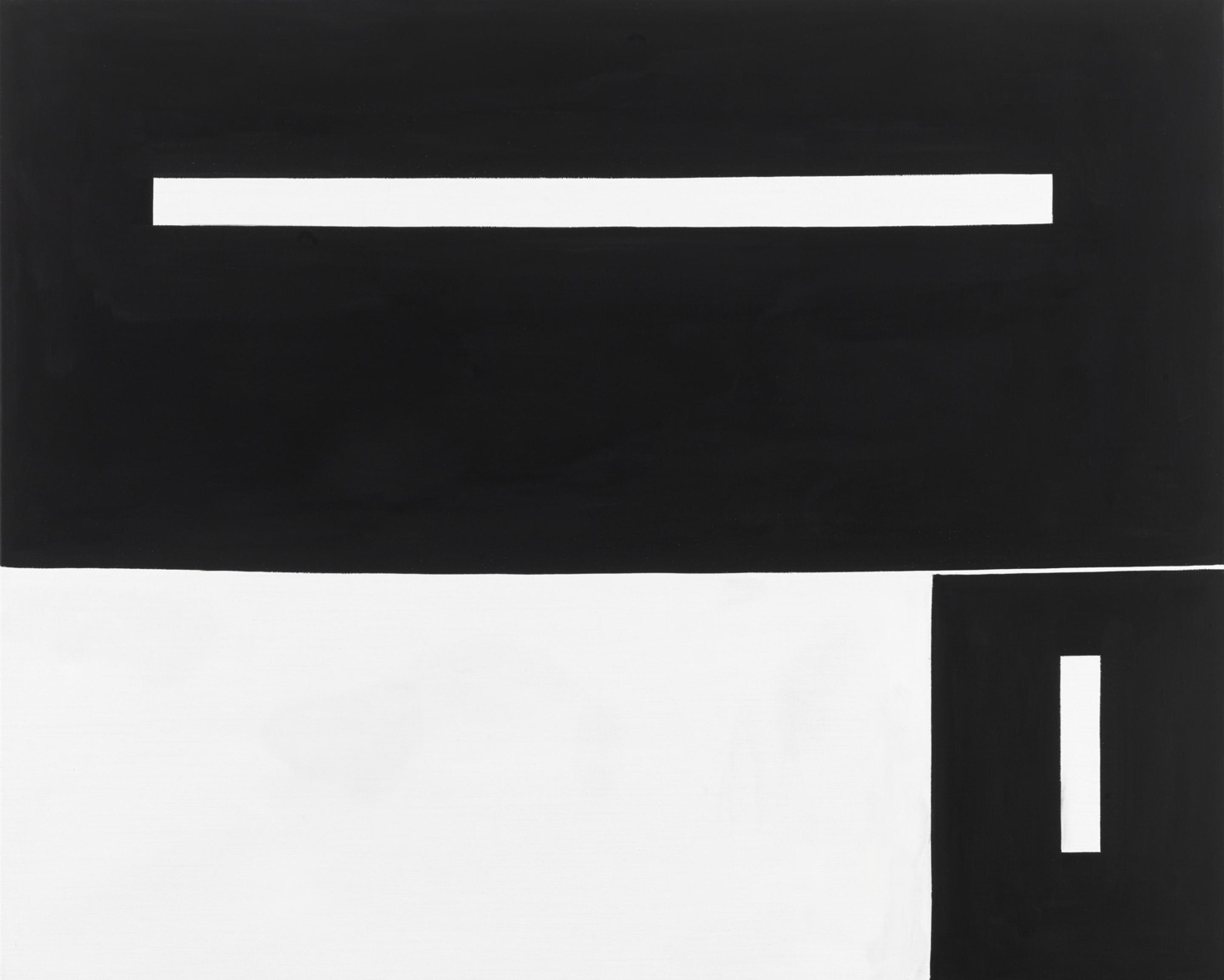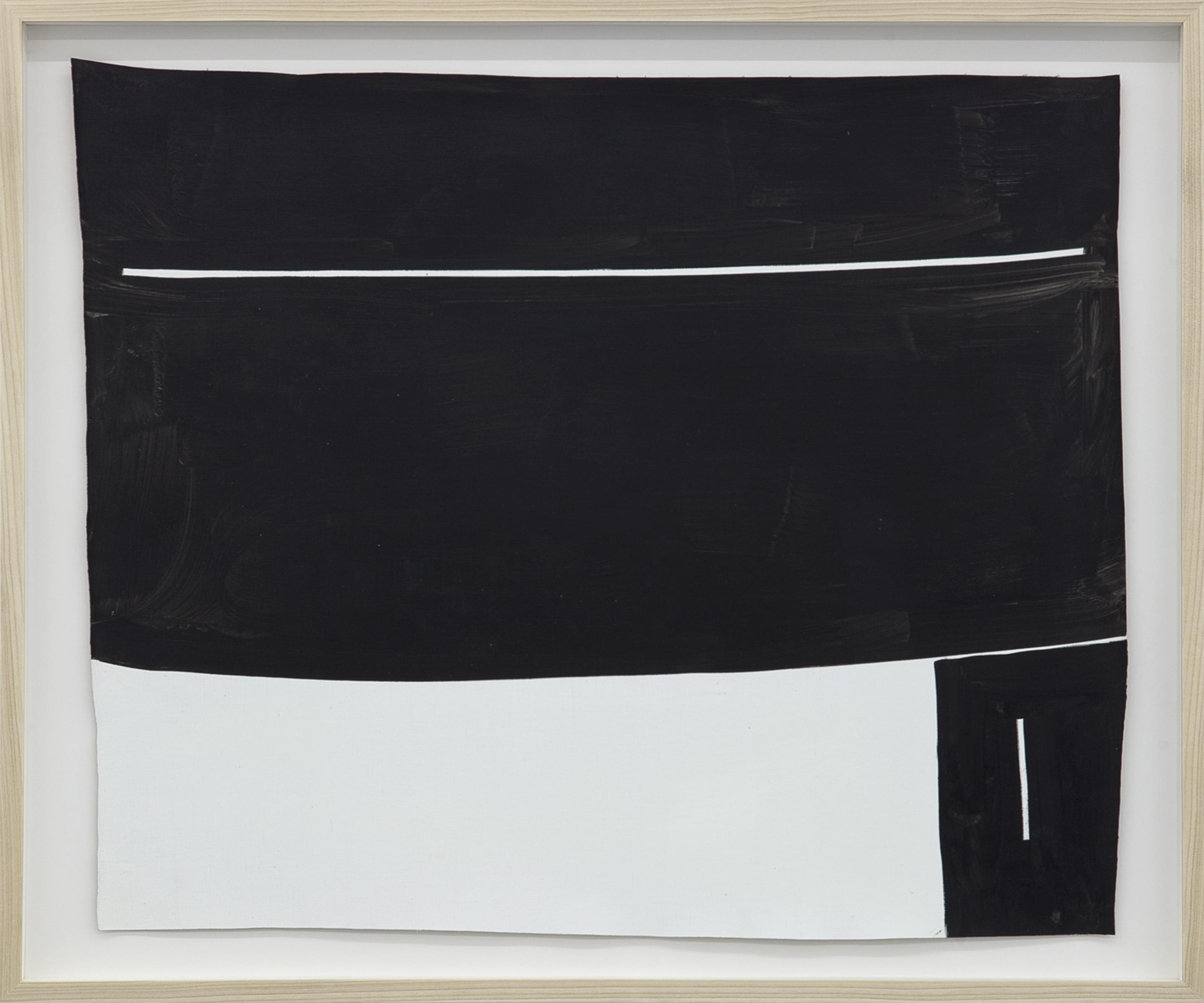AndréBUTZER
André Butzer
Gió Marconi, Milan
22.11.2013–01.02.2014
André Butzer
Gió Marconi, Milan
22.11.2013–01.02.2014
IT
André Butzer
Inaugurazione: giovedì 21 novembre 2013 dalle 19 alle 21
22 novembre 2013 - 1 febbraio 2014
martedì - sabato; 11-19
Gió Marconi ha il piacere di annunciare una mostra di André Butzer che presenta una nuova serie di dipinti. Questa è la terza personale dell’artista allestita negli spazi della galleria dal 2006.
Il lavoro di Butzer da sempre si confronta con la pittura esplorandone la storia, I limiti e le possibilità.
Le prime opere dell’artista sono animate da un uso quasi psichedelico di colori, spesso popolate da forme biomorfe, figure dal ghigno inquietante, maschere dagli occhi vuoti che ricordano alcuni personaggi di Walt Disney con evidenti rimandi alla storia dell’arte, in particolare all’Espressionismo, ma anche alla politica, ai fumetti e alla fantascienza. Su sfondi dal cromatismo quasi grottesco si mescolano realtà e utopia, storia passata e presente, l’artista infatti ha definito questa parte del suo lavoro “Espressionismo Fantascientifico”.
In seguito Butzer sembra, ma solo apparentemente, abbandonare la figurazione, infatti a partire dalla fine degli anni ’90 intreprende un suo personale percorso guidato dall’astrazione: gli sfondi dai colori squillanti sono sostituiti da superfici monocrome, grigie, dalla pittura pastosa, popolate solo da linee in movimento, simili a cavi elettrici, dipinte con colori brillanti, molto materici.
La mostra, da considerarsi come prosecuzione della prima personale dell’artista N-Leben (Vivere-N) tenutasi nella galleria nel 2006, presenta la serie dei cosiddetti dipinti-N e alcuni nuovi dipinti Post-N.
Intorno al 2010 circa Butzer infatti inizia a realizzare una nuova serie di opere, i dipinti-N, risultato di un processo in cui sia la figurazione che i colori dai toni sgargianti scompaiono: superfici grigie fanno da sfondo a qualche forma rettangolare che sembra non avere nè un inizio nè una fine, quelle linee che precedentemente erano realizzate spremendo direttamente il tubetto del colore sulla tela ora sono strisce piatte dipinte con il pennello.
N sta per NASAHEIM (NASA Home), un neologismo creato dall’artista che deriva dalla combinazione di NASA (l’acronimo dell’organizzazione Americana per la navigazione spaziale) e Anaheim la città d’origine di Disneyland. Si tratta di un posto immaginario, irraggiungibile, inventato dall’artista, un non luogo dove secondo Butzer sono custoditi tutti i colori e dove la creazione troverà il suo compimento.
Butzer concepisce la sua produzione artistica come il lungo svolgimento di una sequenza ininterrotta, per cui anche le sue prime opere dipendevano da “N”.
I dipinti-N costituiscono una sorta di punto zero della pittura dove, il rapporto tra i colori, la struttura compositiva e l’unità pittorica sono portati all’estremo, i dipinti-N rispondono solo alle loro stesse regole, celebrano l’autonomia del mezzo pittorico, dove anche l’artista occupa una posizione di secondo piano.
I lavori realizzati in seguito hanno accentuato ulteriormente la sua ricerca sul colore puro e sulla luce: lo sfondo argentato è diventato bianco contrapposto a fasce di colore nero che fluttuano nello spazio pittorico, riempiendolo, e creando una forte opposizione cromatica. Non si tratta di una serie che può essere ripetuta meccanicamente: le opere, che potrebbero sembrare una semplice variazione cromatica degli elementi orizzontali e verticali che le compongono, in realtà presentano notevoli differenze nelle pennellate, nel modo in cui è trattata la superficie con la tempera all’uovo, lavorata con una raffinata emulsione, nell’uso e nelle gradazioni dei colori. Se ci si avvicina alle tele e se le si osserva attentamente, leggere sfumature di colore emergono dallo sfondo. Sempre diversi sono gli elementi che compongono l’immagine e così anche la relazione tra gli spazi non è mai la stessa. Verticale e orizzontale si confrontano, si oppongono, rappresentando la relazione pittorica tra vita e morte.
“Butzer non costruisce o dipinge rettangoli, i suoi dipinti creano delle condizioni. La sua arte non è costruttivista. Per comprenderla o per farne esperienza, lo spettatore deve identificarsi fortemente con il dipinto. (…) Ogni immagine può essere letta come una porzione di luce che nella sua unicità fa riferimento all’infinito processo della vita e della morte”. (Thomas Groetz)
La mostra presenta oltre alla serie acromatica dei dipinti-N anche alcune nuove tele colorate di piccole dimensioni, i dipinti Post-N.
André Butzer, è nato nel 1973 a Stoccarda, vive e lavora a Rangsdorf vicino a Berlino.
Tra le sue ultime personali: Galerie Max Hetzler, Berlino; Metro Pictures, New York; Patricia Low Contemporary, St. Moritz (2013); Galerie Xippas, Parigi; Galerie Bernd Kugler, Innsbruck; Galerie Christine Mayer, Monaco; Rhona Hoffman Gallery, Chicago; Galerie Guido W. Baudach, Berlino (2012); Kestnergesellschaft, Hannover (2011); Kunsthistorisches Museum - CAC Contemporary Art Club at Theseustempel, Vienna (2011); Metro Pictures, New York; Galerie Christine Mayer, Monaco; Galerie Heinrich Erhardt, Madrid (2010); Kunsthalle Nürnberg, Nuremberg (2009).
Inoltre ha partecipato a numerose mostre collettive: Kunsthalle Emden e MoCA - Museum of Contemporary Art, Los Angeles (2013); Kunsthalle Düsseldorf; Museum für Konkrete Kunst, Ingolstadt/Kunstraum München, Monaco (2012); The Saatchi Gallery, Londra; (2011); Kunstmuseum St.Gallen; Galerie Christine Mayer, Monaco; Galerie Krinzinger, Vienna, (2010); Oldenburger Kunstverein; MUMOK, Vienna; ZKM - Museum für Neue Kunst, Karlsruhe; Kestnergesellschaft, Hannover (2008).
Le sue opere sono conservate in importanti collezioni pubbliche tra cui: Goetz Collection, Monaco; Hamburger Bahnhof, Berlino; MOCA, Los Angeles; Kunsthalle Emden; Phoenix Art Museum; Seattle University; The Saatchi Gallery, Londra; University of Chicago.
Inaugurazione: giovedì 21 novembre 2013 dalle 19 alle 21
22 novembre 2013 - 1 febbraio 2014
martedì - sabato; 11-19
Gió Marconi ha il piacere di annunciare una mostra di André Butzer che presenta una nuova serie di dipinti. Questa è la terza personale dell’artista allestita negli spazi della galleria dal 2006.
Il lavoro di Butzer da sempre si confronta con la pittura esplorandone la storia, I limiti e le possibilità.
Le prime opere dell’artista sono animate da un uso quasi psichedelico di colori, spesso popolate da forme biomorfe, figure dal ghigno inquietante, maschere dagli occhi vuoti che ricordano alcuni personaggi di Walt Disney con evidenti rimandi alla storia dell’arte, in particolare all’Espressionismo, ma anche alla politica, ai fumetti e alla fantascienza. Su sfondi dal cromatismo quasi grottesco si mescolano realtà e utopia, storia passata e presente, l’artista infatti ha definito questa parte del suo lavoro “Espressionismo Fantascientifico”.
In seguito Butzer sembra, ma solo apparentemente, abbandonare la figurazione, infatti a partire dalla fine degli anni ’90 intreprende un suo personale percorso guidato dall’astrazione: gli sfondi dai colori squillanti sono sostituiti da superfici monocrome, grigie, dalla pittura pastosa, popolate solo da linee in movimento, simili a cavi elettrici, dipinte con colori brillanti, molto materici.
La mostra, da considerarsi come prosecuzione della prima personale dell’artista N-Leben (Vivere-N) tenutasi nella galleria nel 2006, presenta la serie dei cosiddetti dipinti-N e alcuni nuovi dipinti Post-N.
Intorno al 2010 circa Butzer infatti inizia a realizzare una nuova serie di opere, i dipinti-N, risultato di un processo in cui sia la figurazione che i colori dai toni sgargianti scompaiono: superfici grigie fanno da sfondo a qualche forma rettangolare che sembra non avere nè un inizio nè una fine, quelle linee che precedentemente erano realizzate spremendo direttamente il tubetto del colore sulla tela ora sono strisce piatte dipinte con il pennello.
N sta per NASAHEIM (NASA Home), un neologismo creato dall’artista che deriva dalla combinazione di NASA (l’acronimo dell’organizzazione Americana per la navigazione spaziale) e Anaheim la città d’origine di Disneyland. Si tratta di un posto immaginario, irraggiungibile, inventato dall’artista, un non luogo dove secondo Butzer sono custoditi tutti i colori e dove la creazione troverà il suo compimento.
Butzer concepisce la sua produzione artistica come il lungo svolgimento di una sequenza ininterrotta, per cui anche le sue prime opere dipendevano da “N”.
I dipinti-N costituiscono una sorta di punto zero della pittura dove, il rapporto tra i colori, la struttura compositiva e l’unità pittorica sono portati all’estremo, i dipinti-N rispondono solo alle loro stesse regole, celebrano l’autonomia del mezzo pittorico, dove anche l’artista occupa una posizione di secondo piano.
I lavori realizzati in seguito hanno accentuato ulteriormente la sua ricerca sul colore puro e sulla luce: lo sfondo argentato è diventato bianco contrapposto a fasce di colore nero che fluttuano nello spazio pittorico, riempiendolo, e creando una forte opposizione cromatica. Non si tratta di una serie che può essere ripetuta meccanicamente: le opere, che potrebbero sembrare una semplice variazione cromatica degli elementi orizzontali e verticali che le compongono, in realtà presentano notevoli differenze nelle pennellate, nel modo in cui è trattata la superficie con la tempera all’uovo, lavorata con una raffinata emulsione, nell’uso e nelle gradazioni dei colori. Se ci si avvicina alle tele e se le si osserva attentamente, leggere sfumature di colore emergono dallo sfondo. Sempre diversi sono gli elementi che compongono l’immagine e così anche la relazione tra gli spazi non è mai la stessa. Verticale e orizzontale si confrontano, si oppongono, rappresentando la relazione pittorica tra vita e morte.
“Butzer non costruisce o dipinge rettangoli, i suoi dipinti creano delle condizioni. La sua arte non è costruttivista. Per comprenderla o per farne esperienza, lo spettatore deve identificarsi fortemente con il dipinto. (…) Ogni immagine può essere letta come una porzione di luce che nella sua unicità fa riferimento all’infinito processo della vita e della morte”. (Thomas Groetz)
La mostra presenta oltre alla serie acromatica dei dipinti-N anche alcune nuove tele colorate di piccole dimensioni, i dipinti Post-N.
André Butzer, è nato nel 1973 a Stoccarda, vive e lavora a Rangsdorf vicino a Berlino.
Tra le sue ultime personali: Galerie Max Hetzler, Berlino; Metro Pictures, New York; Patricia Low Contemporary, St. Moritz (2013); Galerie Xippas, Parigi; Galerie Bernd Kugler, Innsbruck; Galerie Christine Mayer, Monaco; Rhona Hoffman Gallery, Chicago; Galerie Guido W. Baudach, Berlino (2012); Kestnergesellschaft, Hannover (2011); Kunsthistorisches Museum - CAC Contemporary Art Club at Theseustempel, Vienna (2011); Metro Pictures, New York; Galerie Christine Mayer, Monaco; Galerie Heinrich Erhardt, Madrid (2010); Kunsthalle Nürnberg, Nuremberg (2009).
Inoltre ha partecipato a numerose mostre collettive: Kunsthalle Emden e MoCA - Museum of Contemporary Art, Los Angeles (2013); Kunsthalle Düsseldorf; Museum für Konkrete Kunst, Ingolstadt/Kunstraum München, Monaco (2012); The Saatchi Gallery, Londra; (2011); Kunstmuseum St.Gallen; Galerie Christine Mayer, Monaco; Galerie Krinzinger, Vienna, (2010); Oldenburger Kunstverein; MUMOK, Vienna; ZKM - Museum für Neue Kunst, Karlsruhe; Kestnergesellschaft, Hannover (2008).
Le sue opere sono conservate in importanti collezioni pubbliche tra cui: Goetz Collection, Monaco; Hamburger Bahnhof, Berlino; MOCA, Los Angeles; Kunsthalle Emden; Phoenix Art Museum; Seattle University; The Saatchi Gallery, Londra; University of Chicago.
EN
André Butzer
Opening: Thursday, November 21 2013; 7pm - 9pm
November 22, 2013 - February 1, 2014
From Tuesday to Saturday; 11am -7pm
Giò Marconi is pleased to announce an exhibition of André Butzer featuring new paintings. This is the third solo show by the artist at the gallery since 2006.
André Butzer’s work addresses the medium of painting, exploring its history, its boundaries and possibilities.
The artist’s early paintings are overrun with an almost psychedelic use of colours and often filled with biomorphic shapes, disturbing sneering figures, and masks with empty eyes reminiscent of Walt Disney characters. There are clear references here to the history of art, and in particular to Expressionism, but also to politics, comics and science fiction. Against backgrounds of almost grotesque colour, the artist combines reality and Utopia, the past and the present, in fact, Butzer himself has described his work as “Science-Fiction Expressionism”.
Later, Butzer apparently abandoned figurative art, and indeed from the late 1990s onwards, he has always embarked on his course dominated by abstraction: the backgrounds of vivid colour have been now replaced by monochrome planes, greys, and thickly applied paint, areas inhabited only by curling lines, like electric cables, painted in bright, pastose layers of colours.
The exhibition at Giò Marconi, to be considered as a continuation of the artist’s first solo show with the gallery in 2006 entitled N-Leben (N-Life) features the so-called N-paintings as well as several new post N-paintings.
It was around 2010 that Butzer started to produce his new series of N-paintings, the outcome of a process which saw the abandonment of both figurations and use of gaudy colour. Grey planes are used as the background for certain rectangular forms which seem to have neither beginning nor end. Those lines which previously were created by squeezing paint straight from the tube onto the canvas have now become flat strips applied with a brush.
“N” stands for NASAHEIM (NASA Home), a neologism conceived by the artist and consisting of a combination of NASA (the acronym for the American space agency) and Anaheim, the original home of Disneyland. “N” is an imaginary, unreachable destination, invented by the artist, a non-place situated on the edge of abstraction where, according to Butzer, all the colours are conserved and where creation will find its true realisation.
Butzer regards his artistic production as the long unfolding of an unbroken sequence, so even his former works were depending from “N”.
The N-paintings constitute a sort of zero zone in painting, where relationships between colours, compositional structure and pictorial unity are taken to their extreme. Thus, the N-paintings obey their own particular rules and celebrate the autonomy of the pictorial medium, where even the artist occupies a position in the background.
Following works have further refined his research of pure colour and light: the silvery background has become white, with contrasting bands of black which fluctuate across the picture, filling the space and creating a strong chromatic contrast.
However, this is by no means a series which could be reproduced mechanically. Although the works might seem simply a chromatic horizontal and vertical variations of one another, there are in fact notable differences in the brushwork, in the way in which the surfaces are handled with the mercurial egg tempera pigment, that has been worked up into a highly refined emulsion, and in the use and gradations of colour. If you come up close to the canvases and examine them carefully, slight undertones of colour emerge from the background. Furthermore the various elements that make up the picture are always different like the relationship between the spaces. The vertical and horizontal contrast with each other, depicting the pictorial relationship between life and death.
“Butzer namely does not construct or paint rectangles, his pictures create conditions. In his art there is no constructivism. To understand or to experience that, the viewer needs to empathize intensively with the paintings. (…) Every picture can be understood as a proportion of light that in his uniqueness refers to the never ending beginning of life and death.” (Thomas Groetz)
Exhibited along with the achromatic series of N-paintings are some recent small coloured canvases, the so-called Post N-paintings.
André Butzer was born in Stuttgart in 1973, lives and works in Rangsdorf near Berlin.
Recent solo exhibitions include: Galerie Max Hetzler, Berlin; Metro Pictures, New York; Patricia Low Contemporary, St. Moritz (2013); Galerie Xippas, Paris; Galerie Bernd Kugler, Innsbruck; Galerie Christine Mayer, Münich; Rhona Hoffman Gallery, Chicago; Galerie Guido W. Baudach, Berlin (2012); Kestnergesellschaft, Hannover (2011); Kunsthistorisches Museum - CAC Contemporary Art Club at Theseustempel, Wien (2011); Metro Pictures, New York; Galerie Christine Mayer, Münich; Galerie Heinrich Erhardt, Madrid (2010); Kunsthalle Nürnberg, Nuremberg (2009).
He has furthermore participated in numerous group shows including: Kunsthalle Emden e MoCA - Museum of Contemporary Art, Los Angeles (2013); Kunsthalle Düsseldorf; Museum für Konkrete Kunst, Ingolstadt/Kunstraum München, Münich (2012); The Saatchi Gallery, London; (2011); Kunstmuseum St.Gallen; Galerie Christine Mayer, Münich; Galerie Krinzinger, Wien, (2010); Oldenburger Kunstverein; MUMOK, Wien; ZKM - Museum für Neue Kunst, Karlsruhe; Kestnergesellschaft, Hannover (2008).
He is represented in important public collections, such as: Goetz Collection, Münich; Hamburger Bahnhof, Berlin; MOCA, Los Angeles; Kunsthalle Emden; Phoenix Art Museum; Seattle University; The Saatchi Gallery, London; University of Chicago.
Opening: Thursday, November 21 2013; 7pm - 9pm
November 22, 2013 - February 1, 2014
From Tuesday to Saturday; 11am -7pm
Giò Marconi is pleased to announce an exhibition of André Butzer featuring new paintings. This is the third solo show by the artist at the gallery since 2006.
André Butzer’s work addresses the medium of painting, exploring its history, its boundaries and possibilities.
The artist’s early paintings are overrun with an almost psychedelic use of colours and often filled with biomorphic shapes, disturbing sneering figures, and masks with empty eyes reminiscent of Walt Disney characters. There are clear references here to the history of art, and in particular to Expressionism, but also to politics, comics and science fiction. Against backgrounds of almost grotesque colour, the artist combines reality and Utopia, the past and the present, in fact, Butzer himself has described his work as “Science-Fiction Expressionism”.
Later, Butzer apparently abandoned figurative art, and indeed from the late 1990s onwards, he has always embarked on his course dominated by abstraction: the backgrounds of vivid colour have been now replaced by monochrome planes, greys, and thickly applied paint, areas inhabited only by curling lines, like electric cables, painted in bright, pastose layers of colours.
The exhibition at Giò Marconi, to be considered as a continuation of the artist’s first solo show with the gallery in 2006 entitled N-Leben (N-Life) features the so-called N-paintings as well as several new post N-paintings.
It was around 2010 that Butzer started to produce his new series of N-paintings, the outcome of a process which saw the abandonment of both figurations and use of gaudy colour. Grey planes are used as the background for certain rectangular forms which seem to have neither beginning nor end. Those lines which previously were created by squeezing paint straight from the tube onto the canvas have now become flat strips applied with a brush.
“N” stands for NASAHEIM (NASA Home), a neologism conceived by the artist and consisting of a combination of NASA (the acronym for the American space agency) and Anaheim, the original home of Disneyland. “N” is an imaginary, unreachable destination, invented by the artist, a non-place situated on the edge of abstraction where, according to Butzer, all the colours are conserved and where creation will find its true realisation.
Butzer regards his artistic production as the long unfolding of an unbroken sequence, so even his former works were depending from “N”.
The N-paintings constitute a sort of zero zone in painting, where relationships between colours, compositional structure and pictorial unity are taken to their extreme. Thus, the N-paintings obey their own particular rules and celebrate the autonomy of the pictorial medium, where even the artist occupies a position in the background.
Following works have further refined his research of pure colour and light: the silvery background has become white, with contrasting bands of black which fluctuate across the picture, filling the space and creating a strong chromatic contrast.
However, this is by no means a series which could be reproduced mechanically. Although the works might seem simply a chromatic horizontal and vertical variations of one another, there are in fact notable differences in the brushwork, in the way in which the surfaces are handled with the mercurial egg tempera pigment, that has been worked up into a highly refined emulsion, and in the use and gradations of colour. If you come up close to the canvases and examine them carefully, slight undertones of colour emerge from the background. Furthermore the various elements that make up the picture are always different like the relationship between the spaces. The vertical and horizontal contrast with each other, depicting the pictorial relationship between life and death.
“Butzer namely does not construct or paint rectangles, his pictures create conditions. In his art there is no constructivism. To understand or to experience that, the viewer needs to empathize intensively with the paintings. (…) Every picture can be understood as a proportion of light that in his uniqueness refers to the never ending beginning of life and death.” (Thomas Groetz)
Exhibited along with the achromatic series of N-paintings are some recent small coloured canvases, the so-called Post N-paintings.
André Butzer was born in Stuttgart in 1973, lives and works in Rangsdorf near Berlin.
Recent solo exhibitions include: Galerie Max Hetzler, Berlin; Metro Pictures, New York; Patricia Low Contemporary, St. Moritz (2013); Galerie Xippas, Paris; Galerie Bernd Kugler, Innsbruck; Galerie Christine Mayer, Münich; Rhona Hoffman Gallery, Chicago; Galerie Guido W. Baudach, Berlin (2012); Kestnergesellschaft, Hannover (2011); Kunsthistorisches Museum - CAC Contemporary Art Club at Theseustempel, Wien (2011); Metro Pictures, New York; Galerie Christine Mayer, Münich; Galerie Heinrich Erhardt, Madrid (2010); Kunsthalle Nürnberg, Nuremberg (2009).
He has furthermore participated in numerous group shows including: Kunsthalle Emden e MoCA - Museum of Contemporary Art, Los Angeles (2013); Kunsthalle Düsseldorf; Museum für Konkrete Kunst, Ingolstadt/Kunstraum München, Münich (2012); The Saatchi Gallery, London; (2011); Kunstmuseum St.Gallen; Galerie Christine Mayer, Münich; Galerie Krinzinger, Wien, (2010); Oldenburger Kunstverein; MUMOK, Wien; ZKM - Museum für Neue Kunst, Karlsruhe; Kestnergesellschaft, Hannover (2008).
He is represented in important public collections, such as: Goetz Collection, Münich; Hamburger Bahnhof, Berlin; MOCA, Los Angeles; Kunsthalle Emden; Phoenix Art Museum; Seattle University; The Saatchi Gallery, London; University of Chicago.
